Jean-Marie Souriau’s Symplectic Foliation Model of Sadi Carnot’s Thermodynamics
Abstract
1. Preamble
[…] The changes in temperature occurring in bodies as a result of motion have been very little studied up to now; this class of phenomena would, however, merit the attention of observers. When bodies are in motion, especially when motive power is consumed or produced, remarkable changes occur in the distribution of heat and perhaps in its quantity. We will present a small number of facts in which this phenomenon develops with the greatest evidence. [On a fort peu étudié jusqu’ici les changements de température survenus dans les corps par l’effet du mouvement; cette classe de phénomènes mériterait cependant l’attention des observateurs. Lorsque les corps sont en mouvement, lorsque surtout il se consomme ou qu’il se produit de la puissance motrice, il arrive des changements remarquables dans la distribution de la chaleur et peut-être dans sa quantité. Nous allons apporter un petit nombre de faits, où ce phénomène se développe avec le plus d’évidence.][23]
[…] Thermodynamics has long accustomed mathematical physics [cf. DUHEM P.] to the consideration of completely integrable Pfaff forms: the elementary heat dQ [notation of thermodynamicists] representing the elementary heat given up in a reversible infinitesimal modification is such a completely integrable form. This point does not seem to have been explored much since then. [La thermodynamique a habitué de longue date la physique mathématique [cf. DUHEM P.] à la considération de formes de Pfaff complètement intégrables: la chaleur élémentaire dQ [notation des thermodynamiciens] représentant la chaleur élémentaire cédée dans une modification infinitésimale réversible est une telle forme complètement intégrable. Ce point ne semble guère avoir été creusé depuis lors.][24]
2. Jean-Marie Souriau’s Symplectic Model of Lie Group Thermodynamics and Geometric Definition of Entropy as Casimir Function on Symplectic Foliation
[…] The consideration of the above case of statistical equilibrium may be made the foundation of the theory of the thermodynamic equilibrium of rotating bodies, a subject which has been treated by Maxwell in his memoir On Boltzmann’s theorem on the average distribution of energy in a system of material points[33]
[…] This book is not one of those that one analyzes hastily; but, on the other hand, the questions it deals with have been greatly agitated in recent times; the ideas defended by Gibbs have been the subject of much controversy; the reasoning with which he supported them has also been criticized. It seems interesting to me to study his work in the light of these controversies and by discussing these criticisms[34]
2.1. Souriau’s Seminal Idea of Symplectic Model of Statistical Mechanics in the Framework of Representation Theory
[…] Tuesday’s class was devoted to the systematic study of the relationships between foliation and Poisson manifolds. The notion of Poisson manifold was introduced by us in 1975 as a natural contravariant generalization of that of symplectic manifold. On such a manifold, the Poisson structure determines a symplectic foliation either in a generalized sense (non-regular Poisson manifold) or in the strict sense of the term (regular Poisson manifold). A simple natural example of the first case is provided by the orbits of the coadjoint representation of a Lie algebra. A simple example of the second case is given by the fibers cotangent to the foliations. Let (M, F) be a symplectic manifold equipped with a Lagrangian foliation £. It has been shown that there always exists on M a connection adapted to foliation which induces on each leaf a flat connection without torsion. If the manifold admits a fiber-type Riemannian metric for £, it admits a Riemannian metric which induces a flat metric on each leaf. We have thus clarified and generalized recent results of A. Weinstein and P. Dazord. The same results are valid if, instead of a Lagrangian foliation, we consider an isotropic foliation of (M, F) such that the field of symplectic orthogonal planes is a coisotropic foliation.[45]
[…] A characteristic trend in mathematical physics is the growing use of the same abstract formalisms for the description of very different physical phenomena. A paradigm is the Hamiltonization of various fields of physics, i.e., the use of Hamiltonian structures and symplectic geometry, based on the mathematical language of exterior differential forms, fibre bundles, Poisson bracket structures and generally Lie algebraic conceptions. Examples are widespread. With the discovery of the Lie-Poisson structure underlying the Euler equations of fluid flow by Arnol’d … Another field where Hamiltonian structures and symplectic geometry play a growing role is quantum mechanics and quantum field theory including nuclear physics. In the foreground are problems of quantization (so-called geometric quantization) by means of the Wigner-Wel formalism and the physics of semi-classical systems. A further use for Hamiltonian structures and symplectic notions is given in the fields of differential equations, optimization and control theory. Characteristic of all these theoretical developments is that the systems considered are ideal systems (fluids, plasmas, quantum systems, …) without energy dissipation (without frictions, damping, …), i.e., without entropy production. There exists a larger literature on the damping of quantized systems or, in other words, on problems of the correct formulation of a quantum theory of systems with friction. A symplectic approach to nonconservative systems- which can be considered as a first step towards a correct quantization procedure-was treated only in few papers without explicitly considering, however, the thermodynamics and, in particular, the entropy balance. On the other hand a few papers have been published on the symplectic structure of equilibrium thermodynamics, but (to the best of our knowledge) not of irreversible thermodynamics, with one important exception, i.e., a set of papers by the Ingarden group on “information geometry” and irreversible thermodynamics where indeed the connection between information theory and differential geometry plays the main role[46]
2.2. Jean-Marie Souriau Scientific Biography
[…] I remember that he often told me about an evening course that he gave at the “Ecole des Meuniers” in collaboration with Jérôme Chastenet de Géry and Roger Valid (who wrote the exercises). Originally, the public courses of 1951–52 were a response to the lack of matrix calculation that Jean-Marie Souriau had felt among French aeronautical engineers, notably at the recently created ONERA. The simple addition of 2 matrices was respectfully considered a very abstract notion. These shortcomings prevented engineers from understanding the progress made by American aircraft manufacturers during the Second World War (progress that allowed them to win the air war while the English won the sea war) … This is what motivated, in the 1950s, the need for a good understanding of matrix calculation to master “Structural Mechanics” and design prototypes of new aircraft…conferences on “Modern Algebra and Geometry” summarized on the poster.(Vallée, de Saxcé, G. & Marle [66])
[…] I studied the problems of vibrations and stability which arise in aeronautics and in some other techniques; this work allowed me to develop stability criteria which are presented in the form of algorithms that can be easily calculated from theoretical or test data; they have since been regularly used in various fields (subsonic and supersonic aircraft, navigation instruments, etc.).Souriau [1]
[…] We couple the elastic properties of the wings of an airplane with the dynamics of the atmosphere described by partial differential equations and a sheet of vortex discontinuities. With all this, we calculate a complex determinant and we count how many turns it makes around the origin when a pulsation ω varies. If it makes the right number of revolutions, the plane is stable; otherwise it will start to vibrate and explode. And it works! It was used for planes like the Concorde. The result was that we could put the motors anywhere, and it made no difference to stability. As a result, we started to put the engines on the rear tail and for 25 years, all the planes that had engines at the rear paid royalties to France, but not to me.Souriau [1]
[…] One of the most important contributions of the theory of dynamic systems to applications is the study of stability. It is not always very easy in a concrete situation to put this study into practice. The thesis of J.-M. Souriau is a beautiful illustration of this with a very delicate discussion of the possible hypotheses in the study of the stability of aircraft, the choice of a linearization method and the mathematical solution proposed in the form of calculation of a complex determinant for which we calculate the number of turns it makes around the origin. In the framework of the theory of systems on several time scales, new stability problems arise. For example, with the theory of dynamic bifurcations introduced by R. Thom, we can discuss delays at bifurcation. The orbits corresponding to the maximum delays (maximum canards) are now considered as “separators” beyond which we observe a very rapid transition towards new attractors.(Françoise [67])
[…] It was with the memory of discussions with engineers who asked the following question: what is essential in mechanics. I remember very well an engineer asking me: is mechanics simply the principle of conservation of energy? This is good for a one-parameter system, but once there are two, it’s not enough. I had of course learned the Lagrange equations and all the analytical principles of mechanics, but it was all just a recipe book; we have not seen real principles.(Souriau [15])
2.3. Jean-Marie Souriau Elaboration of Symplectic Model of Mechanics and Lie Group Thermodynamics
[…] In 1952, I left everything and went to the University of Tunis… The way the administration understood research. You had to search for so many hours a day. There were little windows in the doors so the guards could see if we were doing math or not. I have a friend who was fired for political reasons... This period played a big role in my life, for personal reasons. From a research point of view I began to meditate on the practice of mechanics. When you invert a three by three size matrix, you see a denominator common to all the terms appear, you have discovered the determinant. Having noticed that strange antisymmetric things appeared in the equations of mechanics, I said to myself: this is exactly like Euclidean spaces except that it is quite the opposite. I thus had the idea of doing differential symplectic geometry, the title of my first work published on this subject in 1953… It was much later that I understood that it was implicit in Lagrange. The essential idea is that the solutions of the equations of motion of a dynamic system constitute a symplectic manifold. And I thought that there was an interest in studying this type of manifold, just as there is an interest in studying Riemannian manifolds... It was with the memory of discussions with engineers who asked the following question: what is what is essential in mechanics. I remember very well an engineer who asked me: is mechanics simply the principle of conservation of energy? This is fine for a one-parameter system, but as soon as there are two, it’s not enough. I had of course learned the Lagrange equations and all the analytical principles of mechanics, but all that was a recipe book; we did not see any real principles there.(Souriau [15])
[…] In my first publication, there was also the word “application”. I applied this formalism to the calculation of disturbances, introducing saturated isotropic manifolds (which today we call Lagrangian manifolds) which make it possible to produce so many symplectomorphisms, while there are so few “riemannomorphisms”. Earlier I was talking about determinants which appear miraculously when we try to invert a matrix. For symplectic geometry it’s a bit the same thing. You try to resolve the disturbances of a system and you see the coefficients of the symplectic structure appear. You want to solve a problem, you solve it by hand, you work, and when you have worked well, you see something appear that was hidden underneath. And what Lagrange saw, which Laplace did not see, was the symplectic structure. Finally, if you look closely at the progression of mathematics, you realize that it is very often like that. It’s usage that tells you if it’s important, and then you axiomatize things. But that comes after the fact. What makes symplectic geometry important is that it is self-imposed. I am not a Platonist, I am not saying that mathematical ideas are ready-made and that we only have to discover them. We discover physics. Symplectic geometry was discovered as a tool for celestial mechanics. Starting from a general theory of differential equations, we would probably never have found it. The particular model of the equations of celestial mechanics was richer than the model of “general” differential equations… What makes the theory global, and therefore geometric, is the action of groups of symplectomorphisms. Think of the theorem of Noether, a mathematician at the origin of an important part of modern algebra, but who also discovered this theorem which teaches us that the symmetries of a system lead to conserved quantities. It hides (or reveals) the relationships between group and symplectic. I implemented something that I thought was new, but which had existed since Sophus Lie, a geometrization of Noether’s theorem. I called it “moment map”. The initial variational formulation has exceptions which disappear with the symplectic formulation.(Souriau [15])
[…] In 1958, I returned to France, to Marseille. And there I found myself confronted with theoretical physicists and the problems of quantum mechanics which had disturbed me during my studies like all students, I think. I realized that symplectic geometry was an essential tool for quantum mechanics. And that in fact it was even more appropriate for quantum mechanics than it was for classical mechanics. When I wrote my book on the subject I wanted to write a book on quantum mechanics and I realized that I had to present all classical mechanics in detail, as well as statistical mechanics. These were not foreign theories since they were linked by symplectic structure and symmetries. You take two particles which revolve around each other following Newton’s laws, and then you take a hydrogen atom of which you only see the spectrum. These are two objects which a priori have nothing to do with each other; but they have symplectic symmetries in common. A door is ajar.(Souriau [15])
2.4. Souriau’s Lie Group Thermodynamics as Symplectic Model of Statstical Mechanics
- The geometric temperature (of Planck) is an element of the Lie algebra of the dynamic group (Galileo group for classical mechanics or Poincaré group for relativistic mechanics for example) acting on the system and the geometric heat an element of the dual of the Lie algebra.
- Geometric entropy is the Legendre transform of the opposite of the logarithm of the Laplace transform.
- The Fisher metric of information geometry is associated with the KKS (Kostant–Kirillov–Souriau) two-form, with the two-form conferring a symplectic structure to the coadjoint orbits associated with the moment map.
- The Fisher metric is identified with a geometric heat capacity (Hessian of the Massieu potential).
- Entropy is an invariant Casimir function along the symplectic leaves, which are themselves given by the coadjoint orbits (action of the group on the moment map).
- Lie and dual Lie algebras:Dual space of Lie algebra
- Coadjoint operator:
- Moment map:
- Souriau one-cocycle:
- Souriau two-cocycle:where
- Affine coadjoint operator:
- Poisson bracket:
- Affine Poisson bracket with cocycle:
- Foliation: A foliation can be thought of as a structure where one “cuts” the manifold into a set of smooth leaves (submanifolds), and the overall structure of the foliation can be very different from simply cutting the manifold into disjointed pieces. The leaves can “bend” or “twist” across the manifold in a regular way. The concept of foliation is particularly used in geometric, topological, and analytical studies and appears in many areas, including dynamics, geometry of manifolds, and physics (e.g., in models of dynamical systems or phase structures).
- Lie algebra cohomology: Lie algebra cohomology can be seen through a geometric interpretation. For example, in differential geometry, Lie algebra cohomology appears in the study of local symmetries of a manifold, connection structures on bundles, and complexes of differential forms associated with Lie algebras. Lie algebra cohomology is a way to measure the obstructions to the possibility of “deforming” a structure given by a Lie algebra. It allows for the study properties of Lie algebras, such as representations and internal structure, in a very general and abstract way. We will use the default of cohomology, where a cocycle appears when coadjoint operator is not equivariant.
2.5. Hidden Geometric Definition of Entropy as Casimir Function in Souriau’s Equation
[…] Let us first place ourselves within the framework of classical mechanics. Let us study an isolated, non-dissipative mechanical system—we will briefly call it a “thing”. The set of movements of this “thing” is a symplectic manifold. For what ? It is enough to refer to Lagrange’s Analytical Mechanics [75]; the space of movements is treated as a differentiable manifold; the covariant and contravariant coordinates of the symplectic form are written there (these are the “parentheses” and “brackets” of Lagrange). Let’s now talk about 20th century geometry. Let G be a diffeological group (for example a Lie group); μ a moment of G (a moment, it is a left-invariant 1-form on G); then the action of the group on μ canonically generates a symplectic space (these groups could have an infinite dimension). Epistemological presumption: behind each “thing” is hidden a group G (its “source”), and the movements of the “thing” are simply moments of G (mnemonic Latin doublet: momentum-movimentum). The isolation of the “thing” then indicates that the Poincaré group (respectively Galileo-Bargmann) is inserted in G; this is the origin of the conserved relativistic (respectively classical) quantities associated with a movement x: they simply constitute the moment induced on the spatio-temporal group by the moment-movement x. …There is a theorem that dates back to the 20th century. If we take a coadjoint orbit of a Lie group, it has a symplectic structure. Here is an algorithm for producing symplectic manifolds: take coadjoint orbits of a group. So this suggests that behind this Lagrange symplectic structure, there was a hidden group. Let’s take the classic movement of a moment of the group, then this group is very “big” to have the whole solar system. But in this group is included the Galileo group, and every moment of a group generates moments of a subgroup. We will thus find the moments of the Galileo group, and if we want relativistic mechanics, it will be that of the Poincaré group. In fact with the Galileo group, there is a small problem, it is not the moments of the Galileo group that we use, it is the moments of a central extension of the Galileo group, which is called the Bargmann group, and which has dimension 11. It is because of this extension that there is this famous arbitrary constant appearing in energy. On the other hand, when we do special relativity, we take the Poincaré group and there are no more problems because among the moments there is the mass and the energy is mc2. So the group of dimension 11 is an artifact which disappears when we do special relativity.(Souriau [18], video)
[…] Angular momentum is transmitted to the gas when the molecules collide with the rotating walls, which changes the Maxwell distribution at each point, moving its origin. The walls act as a reservoir of angular momentum. Their movement is characterized by a certain angular speed, and the angular speeds of the fluid and the walls become equal at equilibrium, exactly like the equalization of temperature by energy exchanges.(Balian [101])
3. Metriplectic Flow and Webs Model of Dissipative Thermodynamics
3.1. Theory of Foliation from Ehresmann and Reeb to Libermann
[…] The theory of the action of Lie groups (a much older theory than that of foliations) often leads to considering the generated foliations. Likewise, the theory of the “moving frame” (Cartan) (“dual” in a rather vague sense of the previous one) suggests classes of foliations with a remarkable transverse structure.(Reeb [105])
[…] Thermodynamics has long accustomed mathematical physics [cf. Duhem P.] to the consideration of completely integrable Pfaff forms: the elementary heat dQ [notation of thermodynamicists] representing the elementary heat given up in an infinitesimal reversible modification is such a completely integrable form. This point hardly seems to have been explored since then.(Reeb [105])
3.2. Transverse Symplectic Foliation Model of Dissipative Thermodynamics and the Metriplectic Flow
- First principle of thermodynamics: conservation of energy
- Second principle of thermodynamics: the production of entropy
- Finally, two compatible brackets, a Poisson bracket and a symmetric bracket, determine the geometry in metriplectic systems, as illustrated in Figure 16:
- The energy H is a Casimir invariant of the dissipative bracket, and the entropy S is a Casimir invariant of the Poisson bracket:The symmetry requirement generalizes Onsager symmetry from irreversible linear thermodynamics to nonlinear problems; however, in the traditional metriplectic model, the possibility of Casimir symmetry is not taken into account. The bracket proposed by Kaufman is more general than the metriplectic bracket. The metriplectic equation linked to transverse symplectic foliations is illustrated in Figure 16.
- Symplectic foliation (entropy level sets) for non-dissipative dynamics, characterized by the Fisher metric and the KKS two-form on symplectic leaves.
- Metric transverse foliation (energy level sets) for dissipative dynamics, characterized by the dual Fisher metric given by the Hessian of the entropy on the metric sheets.
4. Thermodynamics as a Science of Symmetry by Herbert B. Callen and Josiah Willard Gibbs
[…] every continuous symmetry of a system implies a conservation theorem, and vice versa… The most primitive class of symmetries is the class of continuous spacetime transformations. The (presumed) invariance of physical laws under time translation implies the conservation of energy. Symmetry under spatial translation implies conservation of momentum, and rotational symmetry implies conservation of angular momentum.(Callen [125])
[…] The most immediately evident conserved coordinate is, of course, the energy (time-translation symmetry). Its relevance as a thermodynamic coordinate underlies the “first law” of thermodynamics. Time-translation, spatial translation, and spatial rotation symmetries are interrelated in a single class of continuous space-time symmetries. The symmetry interpretation of thermodynamics immediately suggests, then, that energy, linear momentum, and angular momentum should play fully analogous roles in thermodynamics. The equivalence of these roles is rarely evident in conventional treatments, which appear to grant the energy a misleadingly unique status. The momentum and the angular momentum are generally suppressed by restricting the theory to systems at rest, constrained by external “clamps”. Nevertheless, it is evident that in principle the linear momentum does appear in the formalism in a form fully equivalent to the energy, for relativistic considerations imply that the energy in one frame appears partially as linear momentum in another frame. Similarly, the angular momentum is only occasionally introduced explicitly into thermodynamic formalisms (as in astrophysical applications to rotating galaxies); it appears, for instance, in the “Boltzmann factor”, , additively and symmetrically with the energy. To stress these facts we might well amend the first law to read that “the extended first law of thermodynamics is the symmetry of the laws of physics under space and time translations and under spatial rotation”.(Callen [125])
[…] Although geometrical representations of propositions in the thermodynamics of fluids are in general use, and have done good service in disseminating clear notions in this science, yet they have by no means received the extension in respect to variety and generality of which they are capable. So far as regards a general graphical method, which can exhibit at once all the thermodynamic properties of a fluid concerned in reversible processes, and serve alike for the demonstration of general theorems and the numerical solution of particular problems, it is the general if not the universal practice to use diagrams in which the rectilinear co-ordinates represent volume and pressure. The object of this article is to call attention to certain diagrams of different construction, which afford graphical methods coextensive in their applications with that in ordinary use, and preferable to it in many cases in respect of distinctness or of convenience.(Gibbs [97])
[…] You have been kind enough to send me four brochures that you have published on thermodynamics; I would like to thank you as well as for the honor you have done me by citing my work on the characteristic functions of fluids. I fear that you have had only an incomplete idea of this work for the reports of the Institut de France to which you refer and I am sending you a copy of what I have written on this subject. I would be honored if you would be kind enough to bring some interest to it. I am writing to you in French for the reason that if I read English quite easily, I would write it very badly. I would be very happy, Sir, if our relations could continue and if I publish, as is probable, some new work on thermodynamics, which I will hasten to send you a copy. Please accept, Sir, the assurance of my most distinguished sentiments—MASSIEU Chief Engineer of Mines, Professor at the Faculty of Sciences of Rennes to Professor Willard Gibbs, at Yale College, New Haven, Connecticut, United States of America.(Gibbs Archive of Yale University)
[…] Massieu’s pioneering contribution had little impact, maybe because his incentive looked technical (although he wrote in a scientific style and accounted for the most recent advances such as Clausius’s entropy). Even presently, most textbooks still ignore him, crediting Gibbs for the invention of thermodynamic potentials. In fact, as it is well known, Gibbs introduced in 1876, under the name of “fundamental function” what we now call the “free enthalpy” G(T, p, {Ni})= U − T S + pV for a fluid made of {Ni} molecules of different species. However, Gibbs himself had clearly written in a footnote: “Massieu appears to have been the first to solve the problem of representing all the properties of a body of invariable composition which are concerned in reversible processes by means of a single function”. In fact, Gibbs’s function can be regarded as an extension of Massieu’s second characteristic function to a mixture that may undergo chemical reactions. Likewise, the “free energy” F(T, p, {Ni}) = U − T S introduced in 1882 by Helmholtz appears as an extension to mixtures of Massieu’s first characteristic function. Duhem, who proposed to term all these functions “thermodynamic potentials”, properly attributes their idea to Massieu, and their introduction in thermochemistry to Gibbs. The same credits are given by Poincaré, who as Duhem presents Massieu’s functions in their modified form H and H’ of 1876. However, Planck’s potential is nothing but the original form ψ’ of Massieu’s second characteristic function; Planck, as many others, seems to have been unaware of Massieu’s work… The fact that Massieu’s original functions ψ and ψ’ of 1869 should be regarded as the most natural thermodynamic potentials, either as Legendre transforms of the entropy function or as logarithms of partition functions, is slowly getting recognition. Massieu’s name, which was not yet mentioned in Gillispie’s dictionary, now appears in Wikipedia.(Balian [128])
5. Last Works of Jean-Marie Souriau on Thermodynamics
- [a]
- chapter 16 “Convexity”
- [b]
- chapter 17 “Measurements”
- [c]
- chapter 18 “Statistical States”
- [d]
- chapter 19 “Thermodynamics”
6. Conclusions
Funding
Acknowledgments
Conflicts of Interest
Abbreviations
| CITV | International Conference on Variational Theories |
| CNRS | Centre National de la Recherche Scientifique |
| ENS | Ecole Normale Supérieure |
| ENSET | École Nationale Supérieure de l’Enseignement Technique |
| ESTA | École Spéciale des Travaux Aéronautiques |
| GENERIC | General Equation for the Non-Equilibrium Reversible–Irreversible Coupling |
| KKS | Kirillov–Kostant–Souriau |
| ONERA | Office National d’Etudes et de Recherches Aérospatiales |
| SMF | Société Mathématique de France |
| SSD | Structure des Systèmes Dynamiques |
Symbols
| Adjoint operator | |
| Coadjoint operator | |
| Affine coadjoint operator | |
| Rotation matrix | |
| Boost vector | |
| Structure coefficients of the Lie algebra | |
| Spatial translation vector | |
| Time translation | |
| Vertical vector | |
| Hamiltonian function | |
| Force in Newton equation | |
| Poisson bracket | |
| Metric flow bracket | |
| Metriplectic bracket | |
| Lie group | |
| Fisher metric | |
| Lie algebra | |
| Dual of Lie algebra | |
| Energy | |
| Fisher metric | |
| Moment map | |
| Lindbladian | |
| Mass | |
| Position | |
| Rotation matrix | |
| Entropy | |
| Special unitary non-compact Lie group | |
| Time | |
| Temperature (Kelvin) | |
| Moment map (in Laplace transform) | |
| Potential function | |
| Boost vector | |
| Speed | |
| Element of Poincaré unit disk | |
| Spatial translation | |
| Position vector | |
| Element of Poincaré unit disk | |
| Element of the Lie algebra | |
| Geometric Planck temperature (element of Lie algebra) | |
| time parameter | |
| Massieu characteristic function | |
| Souriau’s one-cocycle | |
| Dual natural coordinates of information geometry | |
| Liouville measure | |
| Souriau’s two-cocycle | |
| Lagrange–Souriau two-form | |
| Time unit | |
| Density operator | |
| Symplectic two-form | |
| Laplace transform on convex cone Ω |
References
- Souriau, J.M. Sur la Stabilité des Avions. Ph.D. Thesis, ONERA, Chatillon, France, 1952. [Google Scholar]
- Souriau, J.M. Géométrie symplectique différentielle. Applications. In Colloque CNRS, Géométrie Différentielle, Strasbourg; Ehresmann, C., Lichnerowicz, A., Eds.; Editions du CNRS: Paris, France, 1953; pp. 53–59. [Google Scholar]
- Souriau, J.M. Equations Canoniques et Géométrie Symplectique. Publ. Sci. Univ. D’alger A 1954, 1, 239–265. [Google Scholar]
- Souria, J.M. Géométrie de l’Espace des Phases. Calcul des Variations et Mécanique Quantique; Tirage Ronéotypé; Faculté des Sciences: Marseille, France, 1965. [Google Scholar]
- Souriau, J.M. Définition Covariante des Équilibres Thermodynamiques; Supplement Il Nuovo Cimento: Rome, Italy, 1966; Volume 4, pp. 203–216. [Google Scholar]
- Souriau, J.M. Réalisations d’algèbres de Lie au moyen de variables dynamiques. Il Nuovo C A 1967, 49, 197–198. [Google Scholar] [CrossRef]
- Souriau, J.M. Structure des Systèmes Dynamiques; Dunod: Paris, France, 1969. [Google Scholar]
- Souriau, J.M. Mécanique statistique, groupes de Lie et cosmologie. In Colloque International du CNRS Géométrie Symplectique et Physique Mathématique; Souriau, J.M., Ed.; CNRS: Marseille, France, 1974. [Google Scholar]
- Souriau, J.M. Géométrie Symplectique et Physique Mathématique; Deux Conférences de Jean-Marie Souriau; Colloquium de la Société Mathématique de France, Marseille, SMF: Paris, France, 1975. [Google Scholar]
- Souriau, J.M. Thermodynamique et géométrie. In Differential Geometry Methods in Mathematical Physics II; Bleuler, K., Reetz, A., Eds.; Springer: Berlin, Germany, 1977; pp. 369–397. [Google Scholar]
- Souriau, J.M. Géométrie Symplectique et Physique Mathématique; CNRS: Marseille, France, 1978.
- Souriau, J.M. Mécanique Classique et Géométrie Symplectique; CNRS-CPT-84/PE.1695; CNRS: Marseille, France, 1984.
- Souriau, J.M. La structure symplectique de la mécanique décrite par Lagrange en 1811. Math. Sci. Hum. 1986, 94, 45–54. [Google Scholar]
- Souriau, J.M. Titres & Travaux: Principaux Thèmes de Recherche; CNRS: Marseille, France, 1990.
- Souriau, J.M. Itinéraire d’un mathématicien—Un entretien avec Jean-Marie Souriau. Propos Recueillis par Patrick Iglesias. Le J. Maths Élèves 1995, 1, 162–168. [Google Scholar]
- Souriau, J.M. Grammaire de la Nature. Private Publication. 1996. Available online: http://jmsouriau.klacto.net/Souriau.2007a.pdf (accessed on 25 May 2007).
- Souriau, J.M. Structure of dynamical systems, a symplectic view of physics. In Progress in Mathematics; Birkhäuser: Boston, MA, USA, 1997. [Google Scholar]
- Souriau, J.M. C’est Quantique? Donc c’est Géométrique. Série Documents de Travail (Équipe F2DS), Feuilletages-Quantification Géométrique: Textes des Journées D’étude. 2003. Available online: http://jmsouriau.klacto.net/JMS.html (accessed on 10 May 2003).
- Souriau, J.M. Les groupes comme universaux. In Géométrie au XXe Siècle, 1930–2000. Histoire et Horizons; Kouneiher, J., Flament, D., Nabonnand, P., Szczeciniarz, J.J., Eds.; Hermann: Paris, France, 2005; pp. 395–416. [Google Scholar]
- Souriau, J.M. On Geometric Dynamics. Discret. Contin. Dyn. Syst. 2007, 19, 595–607. [Google Scholar] [CrossRef]
- Wolak, R.A. Foliated and associated geometric structures on foliated manifolds. Ann. Fac. Des. Sci. Toulouse 5e Sér. 1989, 10, 337–360. [Google Scholar] [CrossRef]
- Morrison, P.J.; Updike, M.H. An inclusive curvature-like framework for describing dissipation: Metriplectic 4-bracket dynamics. Phys. Rev. 2023, E109, 045202. [Google Scholar]
- Carnot, S. Extracts from Unpublished Notes by Sadi Carnot on Mathematics, Physics and Other Subjects; Gallica: Paris, France, 1824. [Google Scholar]
- Reeb, G. Structures feuilletées. In Differential Topology, Foliations and Gelfand-Fuks Cohomology, Proceedings of the Symposium, Rio de Janeiro, Brazil, 5–24 January 1976; Lecture Notes in Mathematics; Springer: Berlin/Heidelberg, Germany, 1978; Volume 652, pp. 104–113. [Google Scholar]
- Marle, C.M. From Tools in Symplectic and Poisson Geometry to, J.-M. Souriau’s Theories of Statistical Mechanics and Thermodynamics. Entropy 2016, 18, 370. [Google Scholar] [CrossRef]
- Marle, C.M. Géométrie Symplectique et Géométrie de Poisson; Calvage & Mounet: Paris, France, 2018. [Google Scholar]
- Marle, C.M. Projection Stéréographique et Moments, Hal-02157930, Version 1. 2019. Available online: https://hal.science/hal-02157930/document (accessed on 6 July 2019).
- Marle, C.M. On Gibbs states of mechanical systems with symmetries. J. Geom. Symmetry Phys. 2020, 57, 45–85. [Google Scholar] [CrossRef]
- Marle, C.M. Examples of Gibbs States of Mechanical Systems with Symmetries. J. Geom. Symmetry Phys. 2020, 58, 55–79. [Google Scholar] [CrossRef]
- Marle, C.M. On Generalized Gibbs States of Mechanical Systems with Symmetries. arXiv 2021, arXiv:2012.00582v2. Available online: https://arxiv.org/pdf/2012.00582 (accessed on 13 January 2021).
- Marle, C.M. États de Gibbs Construits au Moyen D’un Moment de L’action Hamiltonienne D’un Groupe de Lie: Signification Physique et Exemples. Diaporama Bilingue Français–Anglais, Colloque en L’honneur de Jean-Pierre Marco. 2021. Available online: https://marle.perso.math.cnrs.fr/diaporamas/GibbsStatesMomentMap.pdf (accessed on 7 June 2021).
- Marle, C.M. Gibbs States on Symplectic Manifolds with Symmetries. Geometric Science of Information. In Geometric Science of Information GSI’21, Proceedings of the 5th International Conference, Paris, France, 21–23 July 2021; Lecture Notes in Computer Science 12829; Nielsen, F., Barbaresco, F., Eds.; Springer: Berlin, Germany, 2021; pp. 237–244. [Google Scholar]
- Gibbs, J.W. Elementary Principles in Statistical Mechanics, Developed with Especial Reference to the Rational Foundation of Thermodynamics; Cambridge University Press: Cambridge, UK, 1902. [Google Scholar]
- Hadamard, J. Review of Elementary Principles in Statistical Mechanics, Developed with Special Reference to the Rational Foundations of Thermodynamics by J. Willard Gibbs. Bull. Am. Math. Soc. 1906, 12, 194–210. [Google Scholar] [CrossRef]
- Cartier, P. Some fundamental techniques in the theory of integrable systems. In Lectures on Integrable Systems; Babelon, O., Cartier, P., Kosmann-Schwarzbach, Y., Eds.; World Scientific Publishing: Singapore, 1994; pp. 1–41. [Google Scholar]
- Lawson, H., Jr. Foliations. Bull. Am. Math. Soc. 1974, 80, 369–418. [Google Scholar] [CrossRef]
- Libermann, P. Automorphismes infinitésimaux des structures symplectiques et de contact. In Collection de Géométrie Différentielle Globale; Gauthier-Villars: Paris, France, 1959. [Google Scholar]
- Libermann, P. Problèmes d’équivalence et géométrie symplectique. Astérisque 1983, 107, 43–68. [Google Scholar]
- Libermann, P. Sur quelques propriétés de géométrie homogène. In Séminaire Sud-Rhodanien de Géométrie; Dufour, J.C., Ed.; Travaux en cours; Hermann: Paris, France, 1986; pp. 91–106. [Google Scholar]
- Libermann, P.; Marle, C.M. Symplectic Geometry and analytical Mechanics; Reidel: Dordrecht, The Netherlands, 1987. [Google Scholar]
- Libermann, P. Cartan-Darboux theorems for Pfaffian forms on foliated manifolds. In Proceedings of the VIth International Colloquium Differential Geometry, 1989; Universidade de Santiago de Compostela: Santiago, Spain, 1989; pp. 125–144. [Google Scholar]
- Libermann, P. Legendre Foliations on Contact Manifolds. Differ. Geom. Its Appl. 1991, 1, 57–76. [Google Scholar] [CrossRef]
- Libermann, P. La géométrie différentielle d’Elie Cartan à Charles Ehresmann et André Lichnerowicz. In Géométrie au XXe Siècle, 1930–2000. Histoire et Horizons; Kouneiher, J., Flament, D., Nabonnand, P., Szczeciniarz, J.J., Eds.; Hermann: Paris, France, 2005; pp. 191–208. [Google Scholar]
- Pang, M.Y. The Structure of Legendre Foliations. Trans. Am. Math. Soc. 1990, 30, 417–455. [Google Scholar] [CrossRef]
- Lichnerowicz, A. Formes caractéristiques d’un feuilletage et classes de cohomologie de l’algèbre des vecteurs tangents à valeurs dans les formes normales. C. R. Acad. Sci. Paris 1983, 296, 67–71. [Google Scholar]
- Vojta, G. Symplectic Formalism for the Thermodynamics of Irreversible Processes. Ann. Der Phys. 1990, 502, 251–258. [Google Scholar] [CrossRef]
- Arnold, V. Sur la géométrie différentielle des groupes de Lie de dimension infinie et ses applications à l’hydrodynamique des fluides parfaits. Ann. L’inst. Fourier 1966, 16, 319–361. [Google Scholar] [CrossRef]
- Arnold, V.I.; Givental, A.B. Symplectic Geometry. In Dynamical Systems IV Symplectic Geometry and Its Applications; Encyclopaedia of Mathematical Sciences; Arnold, V.I., Novikov, S.P., Eds.; Springer: Berlin, Germany, 1990; pp. 1–136. [Google Scholar]
- Khesin, B.A.; Tabachnikov, S.L. Arnold Swimming Against the Tide; AMS Non-Series Monographs; Moscow; American Mathematical Society: Providence, RI, USA, 2014; Volume 86. [Google Scholar] [CrossRef]
- Lichnerowicz, A. Variétés symplectiques, canoniques et systèmes dynamiques. In Topics in Differential Geometry, Volume in Honour of ET Davies; Rund, H., Forbes, W., Eds.; Academic Press: New York, NY, USA, 1976; pp. 57–85. [Google Scholar]
- Lichnerowicz, A. Géométrie différentielle des variétés de contact. J. Math. Pures Appl. 1982, 4, 345–380. [Google Scholar]
- Lichnerowicz, A. Variétés de Poisson et feuilletages. Ann. Fac. Sci. Toulouse 1982, 4, 195–262. [Google Scholar] [CrossRef]
- Lichnerowicz, A. Quantum Mechanics and déformations of Geometrical Dynamics. In Quantum Theory, Groups, Fields and Particles; Barut, A.O., Ed.; Reidel: Dordrecht, The Netherlands, 1983; pp. 3–82. [Google Scholar]
- Lichnerowicz, A.; Van-Tan, T. Feuilletages, géométrie riemannienne et géométrie symplectique. Ibidem 1983, 296, 205–210. [Google Scholar]
- Lichnerowicz, A. Physique mathématique, Cours du Collège de France 1982–1983. Inst. De France 1983, 1, 111–115. [Google Scholar]
- Kirillov, A.A. Eléments de la Théorie des Représentations; Mir: Moscow, Russia, 1974. [Google Scholar]
- Kirillov, A.A. Lectures on the orbit method. In Graduate Studies in Mathematics; American Mathematical Society: Providence, RI, USA, 2004. [Google Scholar]
- Kapranov, M. Thermodynamics and the moment map. arXiv 2011, arXiv:1108.3472v1. [Google Scholar] [CrossRef]
- Nencka, H.; Streater, R.F. Information Geometry for some Lie algebras. Infin. Dimens. Anal. Quantum Probab. Relat. Top. 1999, 2, 441–460. [Google Scholar] [CrossRef]
- Pavlov, V.P.; Sergeev, V.M. Thermodynamics from the Differential Geometry Standpoint. Theor. Math. Phys. 2008, 157, 1484–1490. [Google Scholar] [CrossRef]
- Casimir, H.B.G. On onsager’s principle of microscopic reversibility. Rev. Mod. Phys. 1945, 17, 343–362. [Google Scholar] [CrossRef]
- Bachelard, G. La propagation thermique dans les solides. In Étude Sur L’évolution D’un Problème de Physique; Vrin: Paris, France, 1973. [Google Scholar]
- Cosserat, O. Theory and Construction of Structure Preserving Integrators in Poisson Geometry. In Differential Geometry; Université de La Rochelle: La Rochelle, France, 2023. [Google Scholar]
- Hubmer, G.F.; Titulaer, U.M. The Onsager-Casimir relations revisited. J. Stat. Phys. 1987, 49, 331–346. [Google Scholar] [CrossRef]
- Coquinot, B.; Morrison, P.J. A General Metriplectic Framework with Application to Dissipative Extended Magnetohydrodynamics. J. Plasma Phys. 2020, 86, 835860302. [Google Scholar] [CrossRef]
- Vallée, C.; de Saxcé, G.; Marle, C.M. Hommage à Jean-Marie Souriau. Gaz. Des Math. 2012, 133, 97–102. [Google Scholar]
- Françoise, J.P. Systèmes Dynamiques appliqués aux Oscillations. In Proceedings of the 21ème Congrès Français de Mécanique, Bordeaux, France, 26–30 August 2013; Available online: https://hal.science/hal-03441433/document (accessed on 22 November 2021).
- Noether, E. Invariante variationsprobleme. Nachrichten Ges. Der Wiss. Zu Gott. Abh. Math.-Phys. Klasse 1918, 1918, 235–257. [Google Scholar]
- Audin, M. Differential Geometry, Strasbourg, 1953. Not. AMS 2008, 55, 366–370. [Google Scholar]
- de Saxcé, G.; Vallée, C. Bargmann group, momentum tensor and Galilean invariance of Clausius–Duhem inequality. Int. J. Eng. Sci. 2012, 50, 216–232. [Google Scholar] [CrossRef]
- de Saxcé, G.; Vallée, C. Galilean Mechanics and Thermodynamics of Continua; Wiley: Hoboken, NJ, USA, 2016. [Google Scholar]
- de Saxcé, G. Link between Lie Group Statistical Mechanics and Thermodynamics of Continua. Entropy 2016, 18, 254. [Google Scholar] [CrossRef]
- de Saxcé, G. Euler-Poincaré equation for Lie groups with non null symplectic cohomology. Application to the mechanics. In Geometric Science of Information GSI’19, Proceedings of the 4th International Conference, Toulouse, France, 27–29 August 2019; Lecture Notes in Computer Science 11712; Nielsen, F., Barbaresco, F., Eds.; Springer: Berlin, Germany, 2019; pp. 66–74. [Google Scholar]
- de Saxcé, G.; Marle, C.M. Structure des Systèmes Dynamiques Jean-Marie Souriau’s Book 50th Birthday. In Geometric Structures of Statistical Physics, Information Geometry, and Learning; Barbaresco, F., Nielsen, F., Eds.; Springer: Berlin, Germany, 2022; pp. 3–11. [Google Scholar]
- Lagrange, J.L. Mécanique Analytique; Mallet-Bachelier: Paris, France, 1855. [Google Scholar]
- Bourguignon, J.P. Jean-Marie Souriau and Symplectic Geometry, Souriau’19 conference, 50th Birthday of Jean-Marie Souriau’s Book, Paris, 2019. Available online: https://www.youtube.com/watch?v=93hFolIBo0Q&t=3s (accessed on 27 May 2019).
- Gallisot, F. Les formes extérieures en mécanique. Ann. L’inst. Fourier 1952, 4, 145–297. [Google Scholar] [CrossRef]
- Coleman, C.P. The Search for Stable Equilibria on Coadjoint Orbits and Applications to Dissipative Processes; Berkeley Report; University of California: Berkeley, CA, USA, 1994; Available online: https://www.cds.caltech.edu/~marsden/wiki/uploads/projects/geomech/Coleman1994.pdf (accessed on 6 May 2025).
- Barbaresco, F. Higher Order Geometric Theory of Information and Heat Based on Poly-Symplectic Geometry of Souriau Lie Groups Thermodynamics and Their Contextures: The Bedrock for Lie Group Machine Learning. Entropy 2018, 20, 840. [Google Scholar] [CrossRef]
- Barbaresco, F. Jean–Louis Koszul and the elementary structures of information geometry. In Geometric Structures of Information; Nielsen, F., Ed.; Springer: Cham, Switzerland, 2019; pp. 333–392. [Google Scholar]
- Barbaresco, F. Lie Groups Thermodynamics & Souriau-Fisher Metric. In Proceedings of the Souriau 2019 Conference; Lachieze-Rey, M., Ed.; IHP (Institut Henri Poincaré): Paris, France, 2019. [Google Scholar]
- Barbaresco, F. Souriau Exponential Map Algorithm for Machine Learning on Matrix Lie Groups. In Geometric Science of Information GSI’19, Proceedings of the 4th International Conference, GSI 2019, Toulouse, France, 27–29 August 2019; Lecture Notes in Computer Science 11712; Nielsen, F., Barbaresco, F., Eds.; Springer: Berlin, Germany, 2019; pp. 85–95. [Google Scholar]
- Barbaresco, F. Lie Group Statistics and Lie Group Machine Learning Based on Souriau Lie Groups Thermodynamics & Koszul-Souriau-Fisher Metric: New Entropy Definition as Generalized Casimir Invariant Function in Coadjoint Representation. Entropy 2020, 22, 642. [Google Scholar] [CrossRef]
- Barbaresco, F. Souriau-Casimir Lie Groups Thermodynamics and Machine Learning. In Geometric Structures of Statistical Physics, Information Geometry, and Learning; Nielsen, F., Barbaresco, F., Eds.; Springer: Berlin, Germany, 2021; pp. 53–83. [Google Scholar]
- Barbaresco, F. Koszul lecture related to geometric and analytic mechanics, Souriau’s Lie group thermodynamics and information geometry. Inf. Geom. J. 2021, 4, 245–262. [Google Scholar] [CrossRef]
- Barbaresco, F. Invariant Koszul Form of Homogeneous Bounded Domains and Information Geometry Structures. In Progress in Information Geometry; Signals and Communication, Technology; Nielsen, F., Ed.; Springer: Berlin, Germany, 2021; pp. 89–126. [Google Scholar]
- Barbaresco, F. Jean-Marie Souriau’s Symplectic Model of Statistical Physics: Seminal Papers on Lie Groups Thermodynamics—Quod Erat Demonstrandum. In Geometric Structures of Statistical Physics, Information Geometry, and Learning; Nielsen, F., Barbaresco, F., Eds.; Springer: Berlin, Germany, 2021; pp. 12–50. [Google Scholar]
- Barbaresco, F. Archetypal Model of Entropy by Poisson Cohomology as Invariant Casimir Function in Coadjoint Representation and Geometric Fourier Heat Equation. In Geometric Science of Information, Proceedings of the 5th International Conference, GSI 2021, Paris, France, 21–23 July 2021; Lecture Notes in Computer Science 12829; Nielsen, F., Barbaresco, F., Eds.; Springer: Berlin/Heidelberg, Germany, 2021; pp. 417–429. [Google Scholar]
- Barbaresco, F. Symplectic theory of heat and information geometry. In Handbook of Statistics; Special Issue Geometry and Statistics; Elsevier: Amsterdam, The Netherlands, 2022; Volume 46, pp. 107–143. [Google Scholar]
- Barbaresco, F. Symplectic Foliation Structures of Non-Equilibrium Thermodynamics as Dissipation Model: Application to Metriplectic Nonlinear Lindblad Quantum Master Equation. Entropy 2022, 24, 1662. [Google Scholar] [CrossRef]
- Barbaresco, F. Densité de probabilité gaussienne à maximum d’Entropie pour les groupes de Lie basée sur le modèle symplectique de Jean-Marie Souriau. In Proceedings of the GRETSI’22 Conference, Nancy, France, 6–9 September 2022. [Google Scholar]
- Barbaresco, F. Théorie symplectique de l’Information et de la chaleur: Thermodynamique des groupes de Lie et définition de l’Entropie comme fonction de Casimir. In Proceedings of the GRETSI’22 Conference, Nancy, France, 6–9 September 2022; Available online: https://gretsi.fr/data/colloque/pdf/2022_barbaresco696.pdf (accessed on 7 September 2022).
- Barbaresco, F. Entropy Geometric Structure as Casimir Invariant Function in Coadjoint Representation: Geometric Theory of Heat & Information Geometry Based on Souriau Lie Groups Thermodynamics and Lie Algebra Cohomology. In Frontiers in Entropy Across the Disciplines; Freeden, W., Zuhair Nashed, M., Eds.; World Scientific: Singapore, 2022; pp. 133–158. [Google Scholar]
- Barbaresco, F. Souriau Entropy Based on Symplectic Model of Statistical Physics: Three Jean-Marie Souriau’s Seminal Papers on Lie Groups Thermodynamics. In Frontiers in Entropy Across the Disciplines; Freeden, W., Zuhair Nashed, M., Eds.; World Scientific: Singapore, 2022; pp. 55–90. [Google Scholar]
- Barbaresco, F. Symplectic Foliation Transverse Structure and Libermann Foliation of Heat Theory and Information Geometry. In Geometric Science of Information GSI’23, Proceedings of the 6th International Conference, St. Malo, France, 30 August–1 September 2023; Lecture Notes in Computer Science 14072; Nielsen, F., Barbaresco, F., Eds.; Springer: Berlin, Germany, 2023; pp. 152–164. [Google Scholar]
- Gibbs, J.W. Graphical Methods in the Thermodynamics of Fluids. Trans. Conn. Acad. 1873, II, 309–342. [Google Scholar]
- Gibbs, J.W. A Method of Geometrical Representation of the Thermodynamic Properties of Substances by Means of Surfaces. In Transactions of the Connecticut Academy, Vol. II, Part 2; Harvard Ed. Connecticut: Boston, MA, USA, 1873; pp. 382–404. [Google Scholar]
- Gibbs, J.W. Equilibrium of Heterogeneous Substances. Trans. Conn. Acad. 1875, 3, 108–248, 343–524. [Google Scholar] [CrossRef]
- Gibbs, J.W. On the Equilibrium of Heterogeneous Substances; The Scientific Papers of J. Willard Gibbs; Longmans: London, UK, 1906. [Google Scholar]
- Kozlov, V.V. Gibbs and Poincaré Statistical Equilibria in Systems with Slowly Varying Parameters. Dokl. Math. 2004, 69, 278–281. [Google Scholar]
- Balian, R. From Microphysics to Macrophysics (Methods and Applications of Statistical Physics), Vol I; Springer: Berlin/Heidelberg, Germany, 2007. [Google Scholar]
- Martinet, J.; Reeb, G. Sur une généralisation des structures feuilletées de codimension 1. In Dynamical Systems; Maslov, V., Ed.; Academic Press: New York, NY, USA, 1973; pp. 177–184. [Google Scholar]
- Reeb, G. Sur certaines propriétés topologiques des trajectoires des systèmes dynamiques. Acad. R. Belg. 1952, 27, 234–265. [Google Scholar]
- Reeb, G. Sur la théorie générale des systèmes dynamiques. Ann. L’inst. Fourier 1956, 6, 89–115. [Google Scholar] [CrossRef]
- Reeb, G. Structures feuilletées. Bull. Soc. Math. Fr. 1959, 87, 445–450. [Google Scholar] [CrossRef]
- Reeb, G.; Ehresmann, C.; Thom, R.; Libermann, P. Structures feuilletées. In Colloques Internationaux Du Cnrs (CIDC); Grenoble, Institut Fourier; CNRS: Paris, France, 1964. [Google Scholar]
- Haefliger, A. Naissance des feuilletages, d’Ehresmann-Reeb à Novikov. In Géométrie au XXe Siècle, 1930–2000. Histoire et Horizons; Kouneiher, J., Flament, D., Nabonnand, P., Szczeciniarz, J.J., Eds.; Hermann: Paris, France, 2016; pp. 99–110. [Google Scholar]
- Molino, P. Dualité symplectique, feuilletage et géométrie du moment. Publ. Mat. 1989, 33, 533–541. [Google Scholar] [CrossRef]
- Molitor, M. Kähler toric manifolds from dually flat spaces. arXiv 2021, arXiv:2109.04839v1. Available online: https://arxiv.org/pdf/2109.04839 (accessed on 10 September 2021).
- Condevaux, M.; Dazord, P.; Molino, P. Géométrie du moment. In Publications du Département de Mathématiques de Lyon, Fascicule 1B, Séminaire Sud-Rhodanien, 1988; Hermann Ed.: Paris, France, 1988; Volume 1, pp. 131–160. [Google Scholar]
- Reinhart, B.L. Differential Geometry of Foliations; Springer: Cham, Switzerland, 1983; Volume 99. [Google Scholar]
- Basart, H.; Lichnerowicz, A. Variétés de poisson et star-produits tangentiels. Ibidem 1 1982, 295, 681–685. [Google Scholar]
- Hamoui, A.; Lichnerowicz, A. Sur la quantification d’un système dynamique à hamiltonien dépendant du temps. C. R. Acad. Sci. Paris 1982, 294, 705–710. [Google Scholar]
- Lie, S. Allgemeine Theorie der partiellen Differentialgleichungen erster Ordnung. Math. Ann. 1876, 9, 245–296. [Google Scholar] [CrossRef]
- Lie, S. Allgemeine Theorie der partiellen Differentialgleichungen erster Ordnung (Zweite Abhandlung). Math. Ann. 1877, 11, 464–557. [Google Scholar] [CrossRef]
- Lie, S. Transformationsgruppen, I, II, III; Reprinted by Chelsea Publishing Company: New York, NY, USA; Teubner: Berlin, Germany, 1893. [Google Scholar]
- Albert, C. Le théorème de réduction de Marsden-Weinstein en géométrie cosymplectique et de contact. J. Geom. Phys. 1989, 6, 627–649. [Google Scholar] [CrossRef]
- Jaynes, E.T. Information Theory and Statistical Mechanics. Phys. Rev. 1957, 106, 620–630. [Google Scholar] [CrossRef]
- Jaynes, E.T. Information Theory and Statistical Mechanics II. Phys. Rev. 1957, 108, 171–190. [Google Scholar] [CrossRef]
- Nehorosev, N.N. Action-angle variables and their generalizations. Transl. Mosc. Math. Soc. 1972, 26, 180–198. [Google Scholar]
- Delzant, T. Variables Actions-Angles non Commutatives et Exemples D’images Convexes de L’application Moment; Paris 6 University: Paris, France, 1986. [Google Scholar]
- Delzant, T. Hamiltoniens périodiques et images convexes de l’application moment. Bull. Soc. Math. Fr. 1986, 116, 315–339. [Google Scholar] [CrossRef]
- Pisano, R. Brief summaries on symmetries in the history of physics–mathematics: James Clerk Maxwell (1865–1873), Emmy Noether (1915–1918) and Albert Einstein (1905–1926). J. Phys. Conf. Ser. IOP Oxf. 2024, 2877, 012101. [Google Scholar] [CrossRef]
- Callen, H.B. A Symmetry Interpretation of Thermodynamics. In Foundations of Continuum Thermodynamics; Domingos, J.D.D., Ed.; Instituto de Alta Cultura-Núcleo de Estudos de Engenharia Mecanica: Lisboa, Portugal, 1973; pp. 61–79. [Google Scholar]
- Callen, H.B. Thermodynamics as a Science of Symmetry. Found. Phys. 1974, 4, 423–443. [Google Scholar] [CrossRef]
- Callen, H.B. Thermodynamics and An Introduction to Thermostatistics, 2nd ed.; Wiley: New York, NY, USA, 1985. [Google Scholar]
- Carnot, S. Réflexions sur la Puissance Motrice du Feu et sur les Machines Propres à Développer Cette Puissance; Bachelier: Paris, France, 1824. [Google Scholar]
- Balian, R. François Massieu et les potentiels thermodynamiques. In Évolution des Disciplines et Histoire des Découvertes; Académie des Sciences: Paris, France, 2015. [Google Scholar]
- Massieu, F. Sur les Fonctions caractéristiques des divers fluides. C. R. L’acad. Sci. Paris 1869, 69, 858–862. [Google Scholar]
- Massieu, F. Addition au précédent Mémoire sur les Fonctions caractéristiques. C. R. L’acad. Sci. Paris 1869, 69, 1057–1061. [Google Scholar]
- Massieu, F. Exposé des Principes Fondamentaux de la Théorie Mécanique de la Chaleur (Note Destinée à Servir D’introduction au Mémoire de L’auteur sur les Fonctions Caractéristiques des Divers Fluides et la Théorie des Vapeurs); Gallica: Paris, France, 1873. [Google Scholar]
- Massieu, F. Thermodynamique: Mémoire sur les Fonctions Caractéristiques des Divers Fluides et sur la Théorie des Vapeurs; Académie des Sciences: Paris, France, 1876; Volume 1, pp. 92–110. [Google Scholar]
- Balian, R.; Alhassid, Y.; Reinhardt, H. Dissipation in many-body systems: A geometric approach based on information theory. Phys. Rep. 1986, 131, 1–146. [Google Scholar] [CrossRef]
- Balian, R.; Valentin, P. Hamiltonian structure of thermodynamics with gauge. Eur. Phys. J. B Condens. Matter Complex. Syst. 2001, 21, 269–282. [Google Scholar] [CrossRef]
- Benayoun, L. Méthodes Géométriques Pour L’étude des Systèmes Thermodynamiques et la Génération D’équations D’état. Ph.D. Thesis, Institut National Polytechnique de Grenoble, Grenoble, France, 1999. [Google Scholar]
- Benayoun, L.; Valentin, P. Evolution of equations of state through contact transformations. Fluid. Phase Equilib. 2022, 194, 439–449. [Google Scholar] [CrossRef]
- Cartan, E. Sur certaines expressions différentielles et le problème de Pfaff. Ann. Sci. L’école Norm. Supérieure 1899, 16, 239–332. [Google Scholar] [CrossRef]
- Cartan, E. Leçons sur les Invariants Intégraux; Hermann: Paris, France, 1958. [Google Scholar]
- Darboux, G. Sur le problème de Pfaff (Partie 1). Bull. Sci. Math. Astron. 1882, 2, 14–36. [Google Scholar]
- Darboux, G. Sur le problème de Pfaff (Partie 2). Bull. Sci. Math. Astron. 1882, 2, 49–62. [Google Scholar]
- Goursat, E. Leçons sur les Problèmes de Pfaff; Hermann: Paris, France, 1922. [Google Scholar]
- Dazord, P. Feuilletages et mécanique hamiltonienne. Publ. Du Dép. Math. (Lyon) 1983, 3, 1–49. [Google Scholar]
- Dazord, P.; Molino, P. Gamma-Structures poissonniennes et feuilletages de Libermann. Publ. Du Dép. Math. (Lyon) 1988, 1, 69–89. [Google Scholar]
- Dazord, P.; Delzant, T. Le problème général des variables actions-angles. J. Differ. Geom. 1987, 26, 223–251. [Google Scholar] [CrossRef]
- Ehresmann, C. Sur la théorie des variétés feuilletées. Rend. Di Mat. 1951, 5, 64–83. [Google Scholar]
- Fedida, E. Feuilletages du Plan, Feuilletages de Lie. Ph.D. Thesis, University of Strasbourg, Strasbourg, France, 1973. [Google Scholar]
- Fedida, E. Sur l’existence des feuilletages de Lie. C.-R. L’acad. Sci. Paris 1974, 278, 835–837. [Google Scholar]
- Fedida, E. Sur la théorie des feuilletages associée au repère mobile: Cas des feuilletages de lie. In Differential Topology, Foliations and Gelfand-Fuks Cohomology; Lecture Notes in Mathematics; Schweitzer, P.A., Ed.; Springer: Berlin, Germany, 1978; pp. 183–195. [Google Scholar]
- Libermann, P. Sur Ie problème d’équivalence de certaines structures infinitésimales regulières. Ann. Mat. Pura Ed Appl. 1954, 36, 27–120. [Google Scholar] [CrossRef]
- Jayne, N. Legendre Foliations on Contact Metric Manifolds. Ph.D. Thesis, Massey University, Massey, New Zealand, 1992. [Google Scholar]
- Mrugala, R. Geometrical formulation of equilibrium phenomenological thermodynamics. Rep. Math. Phys. 1978, 14, 419–427. [Google Scholar] [CrossRef]
- Mrugala, R. On contact and metric structures on thermodynamic spaces. Math. Asp. Quantum Inf. Quantum Chaos 2000, 1142, 167–181. [Google Scholar]
- Thomson, W. XXXVI.—An Account of Carnot’s Theory of the Motive Power of Heat; with Numerical Results deduced from Regnault’s Experiments on Steam. Trans. R. Soc. Edinb. 1849, 16, 541–574. [Google Scholar] [CrossRef]
- Trusdell, C. The Tragicomical History of Thermodynamics 1822–1854; Springer: Berlin, Germany, 1980. [Google Scholar]
- Onsager, L. Reciprocal relations in irreversible processes I. Phys. Rev. 1931, 37, 405–426. [Google Scholar] [CrossRef]
- Onsager, L.; Machlup, S. Fluctuations and Irreversible Processes. Phys. Rev. 1953, 91, 1505–1510. [Google Scholar] [CrossRef]
- Onsager, L.; Machlup, S. Fluctuations and Irreversible Processes II. Systems with Kinetic Energy. Phys. Rev. 1953, 91, 1512–1515. [Google Scholar] [CrossRef]
- Poincaré, H. Thermodynamique; Cours de Sorbonne 2nd Édition Revue et Corrigée; Gauthier-Villars: Paris, France, 1908. [Google Scholar]


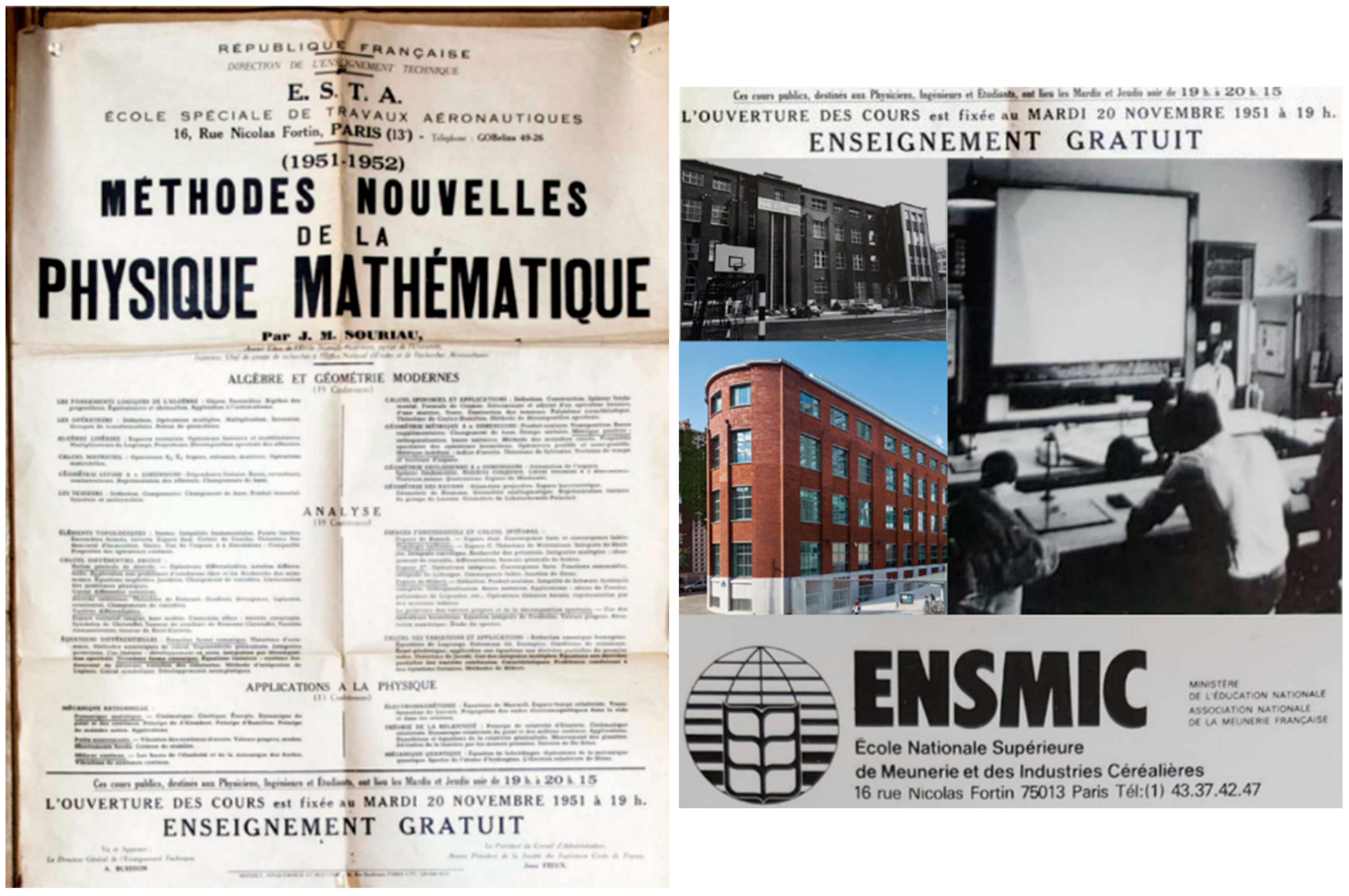
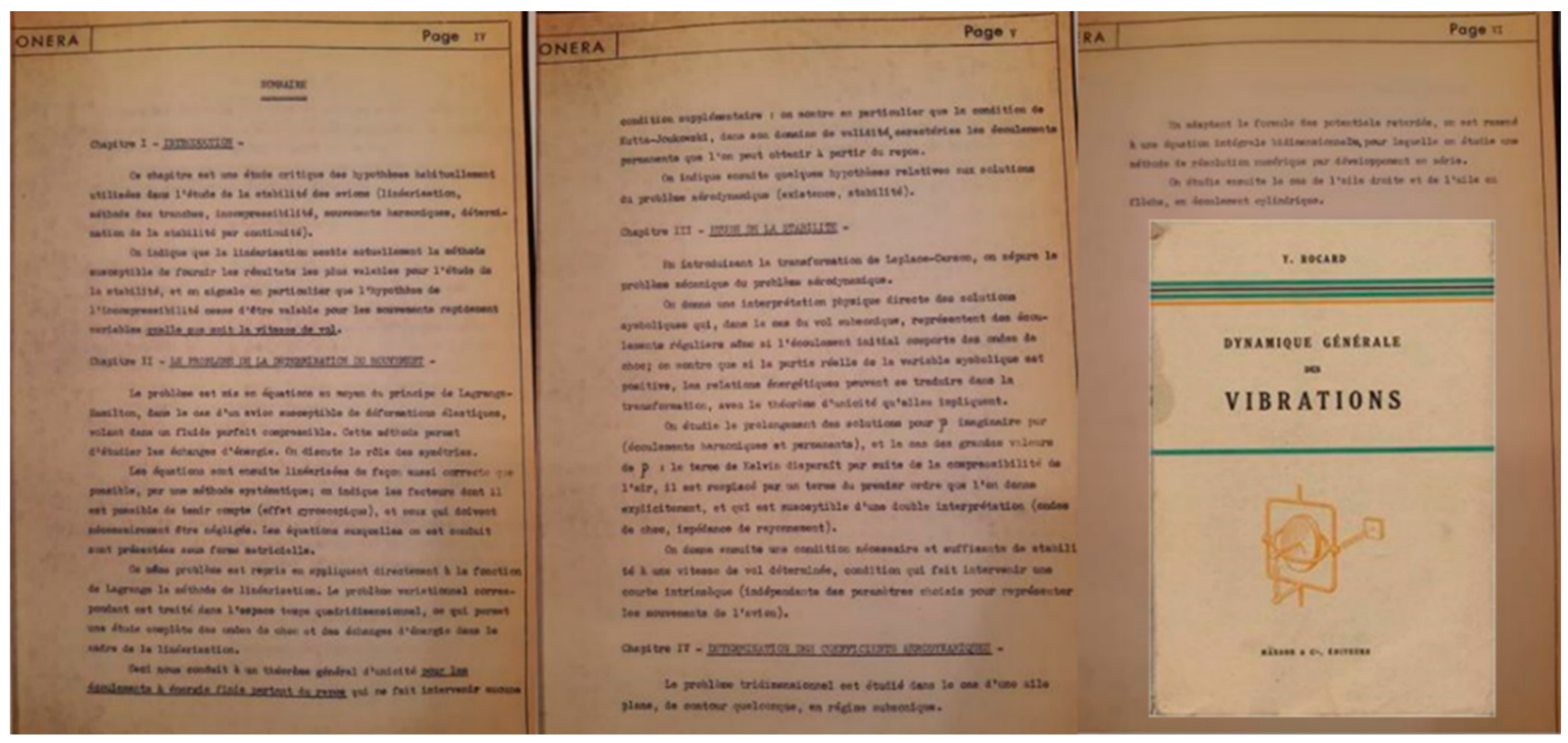
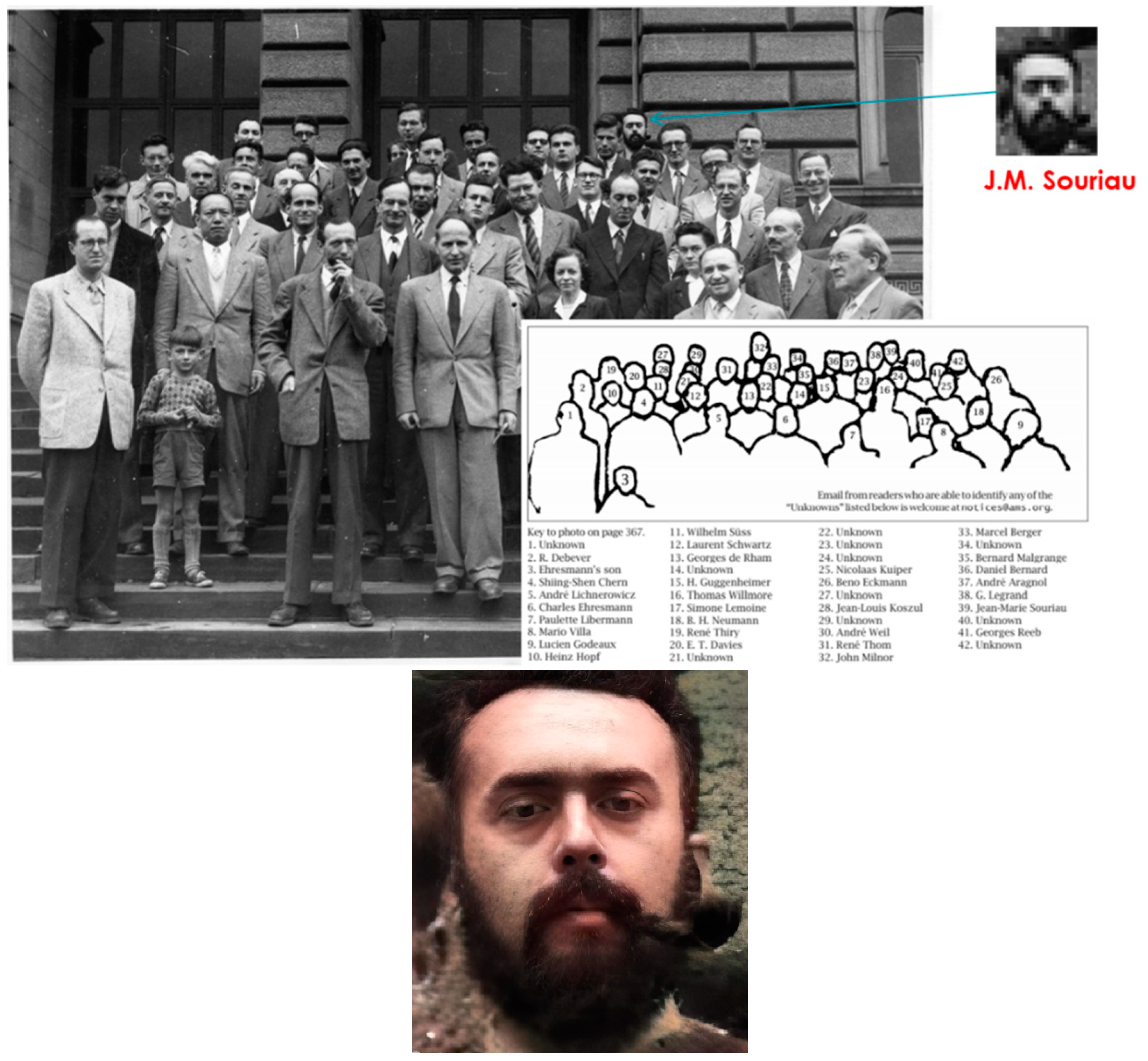

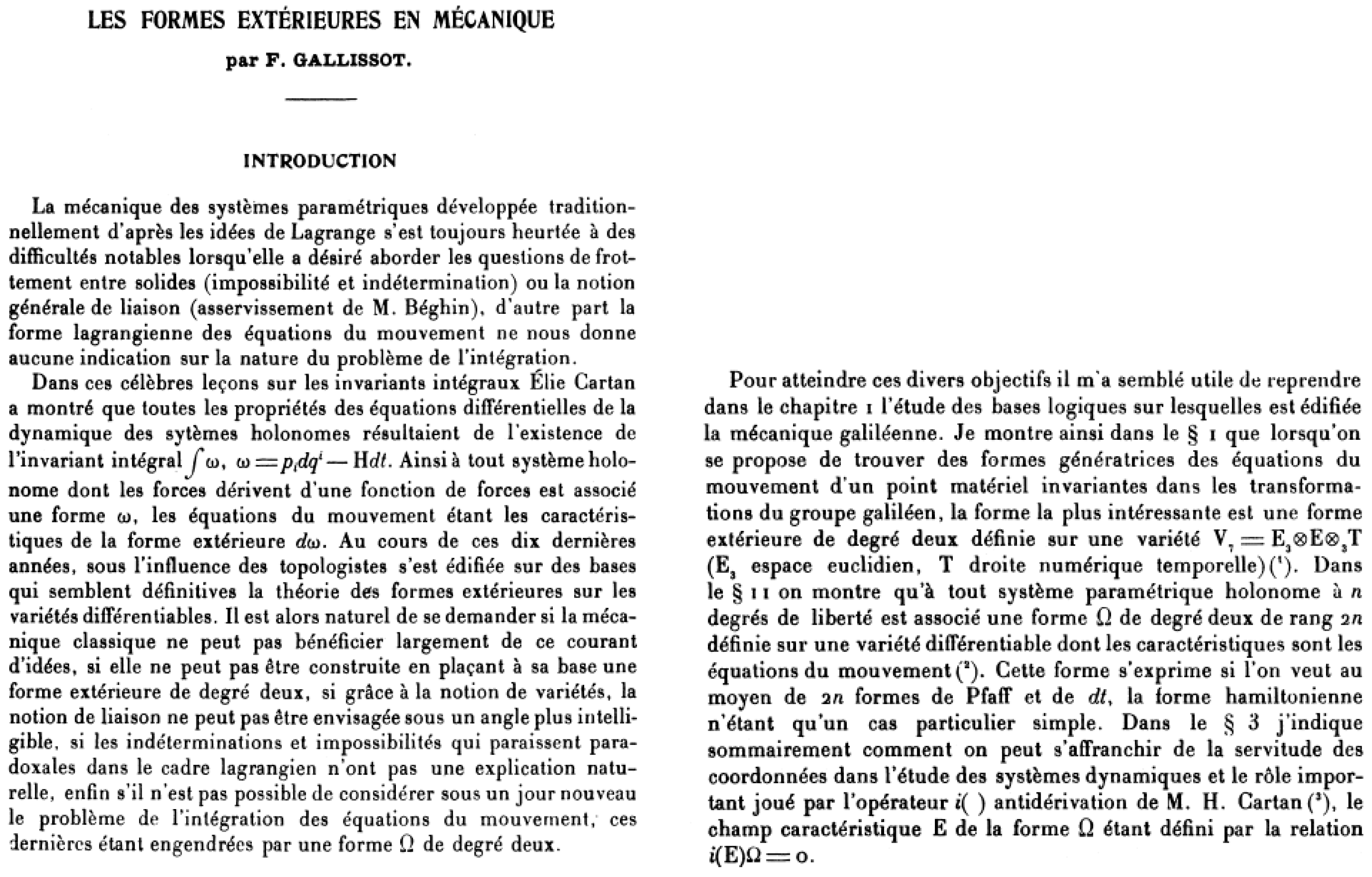
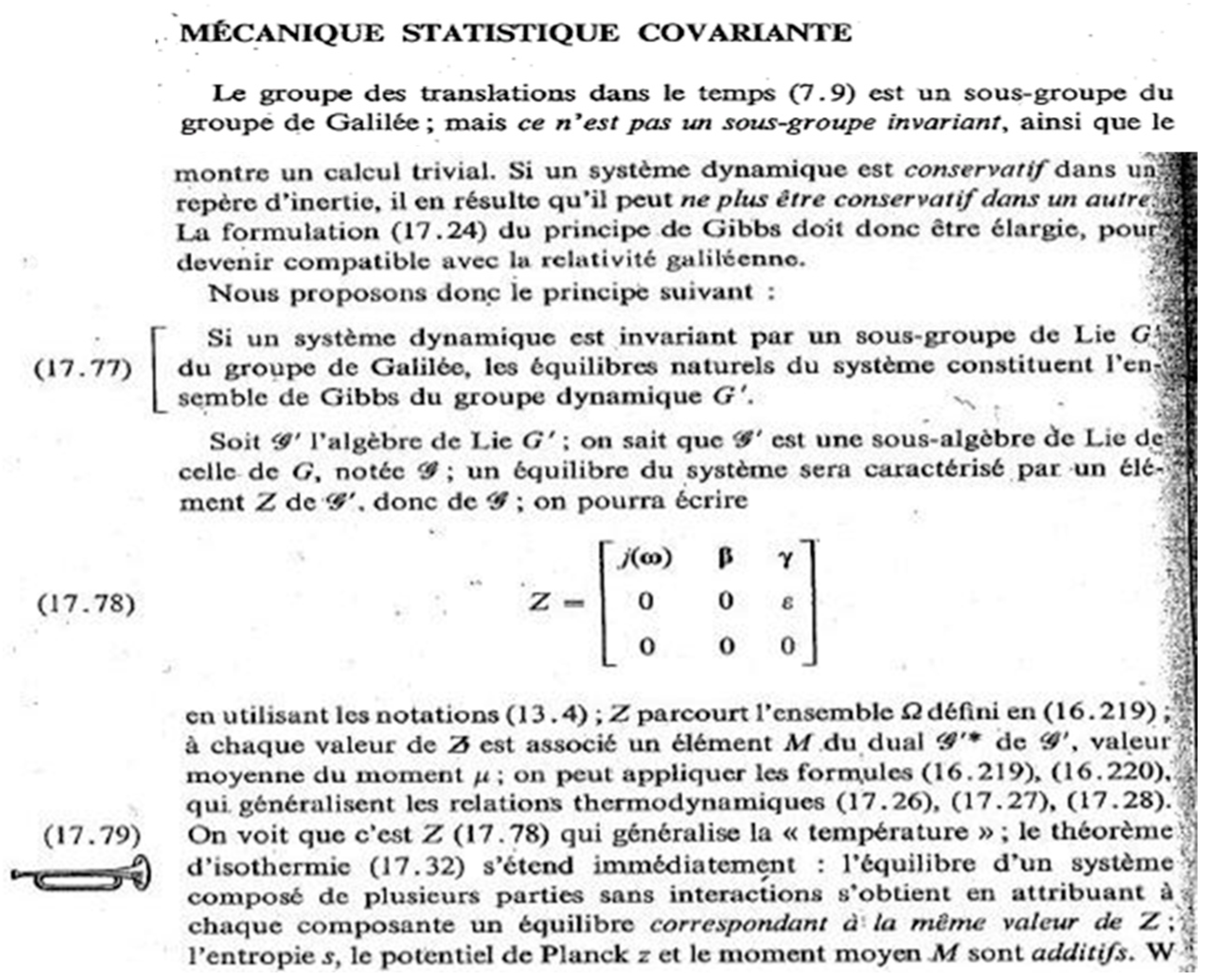
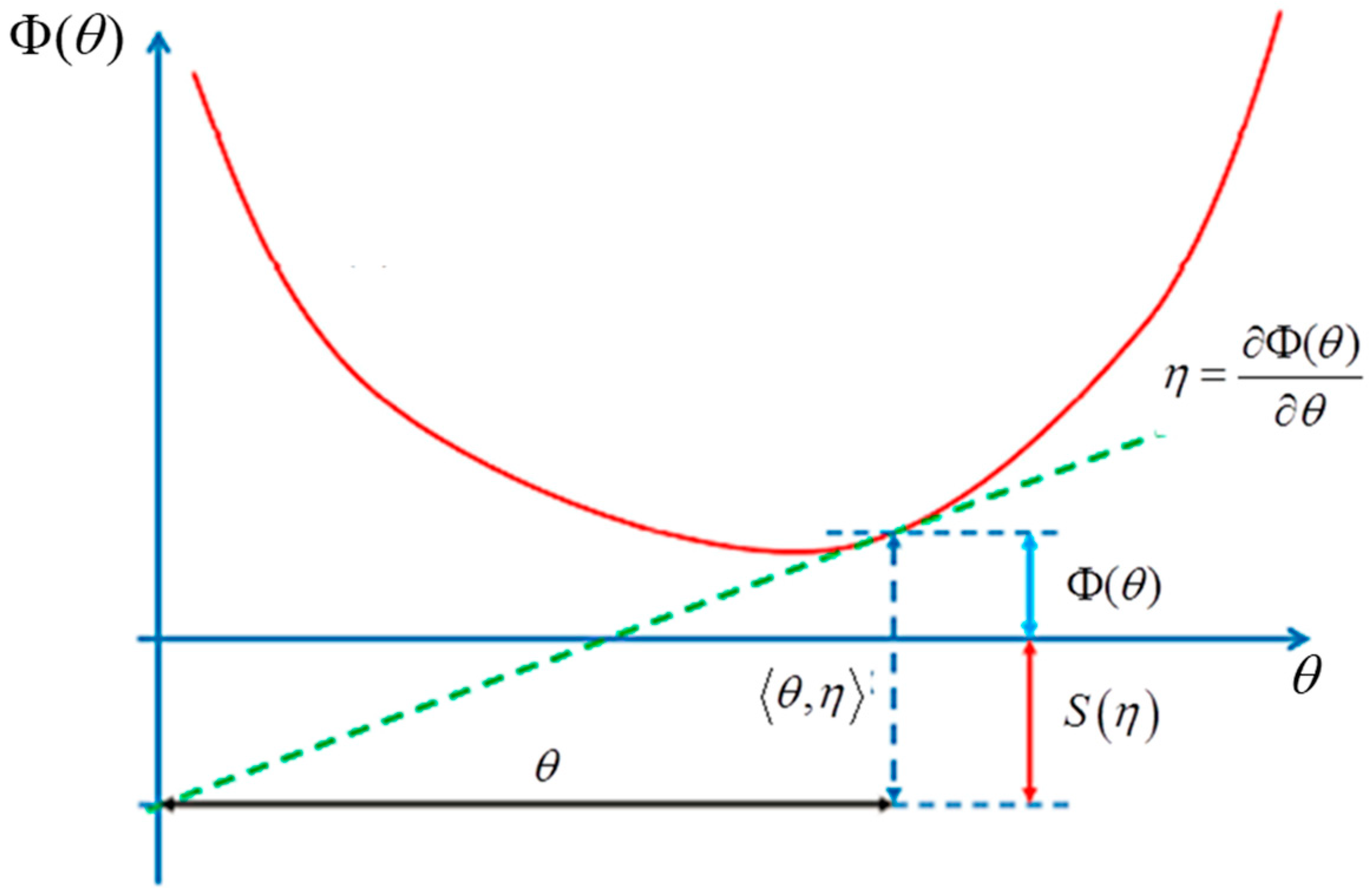

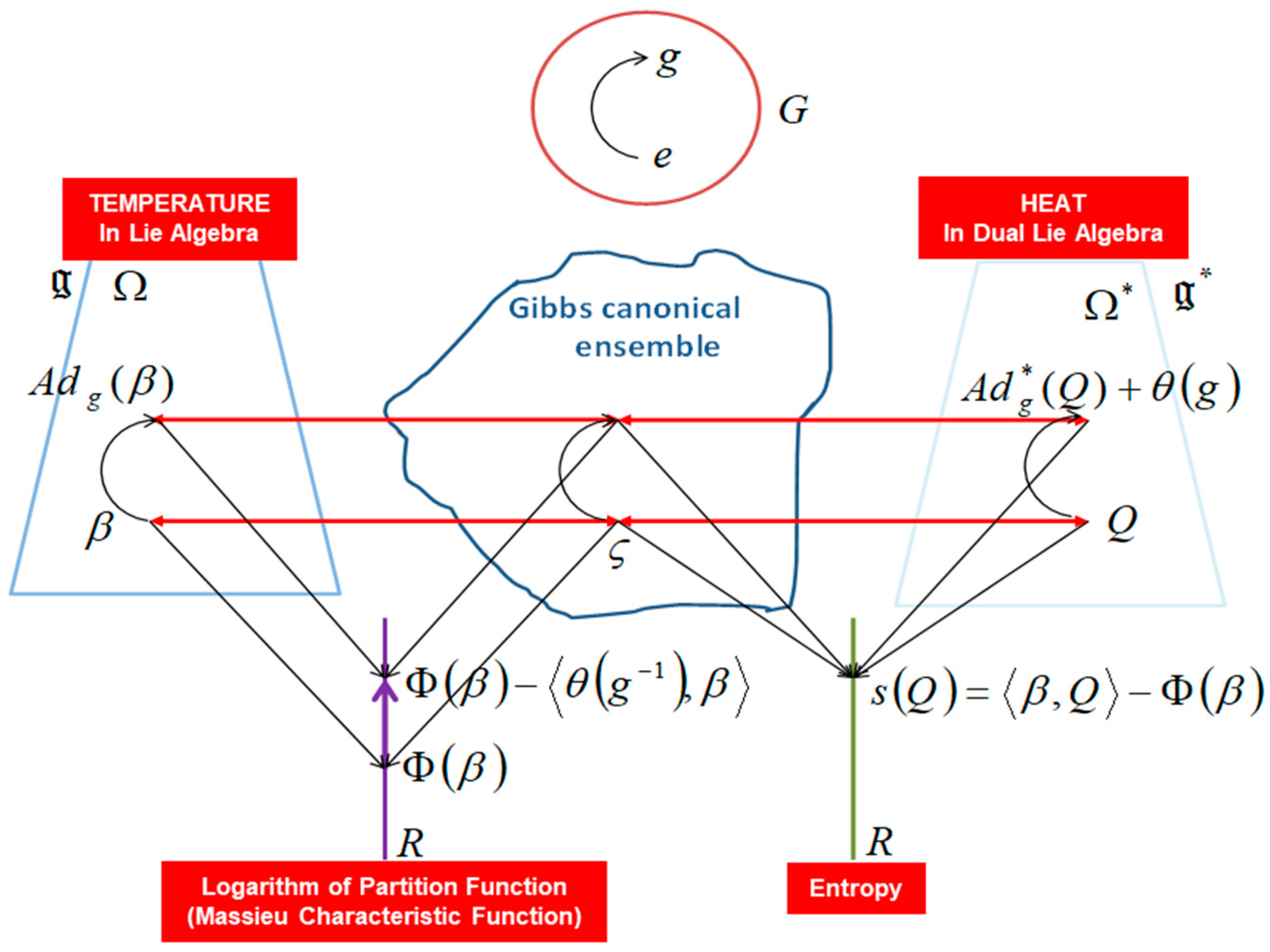


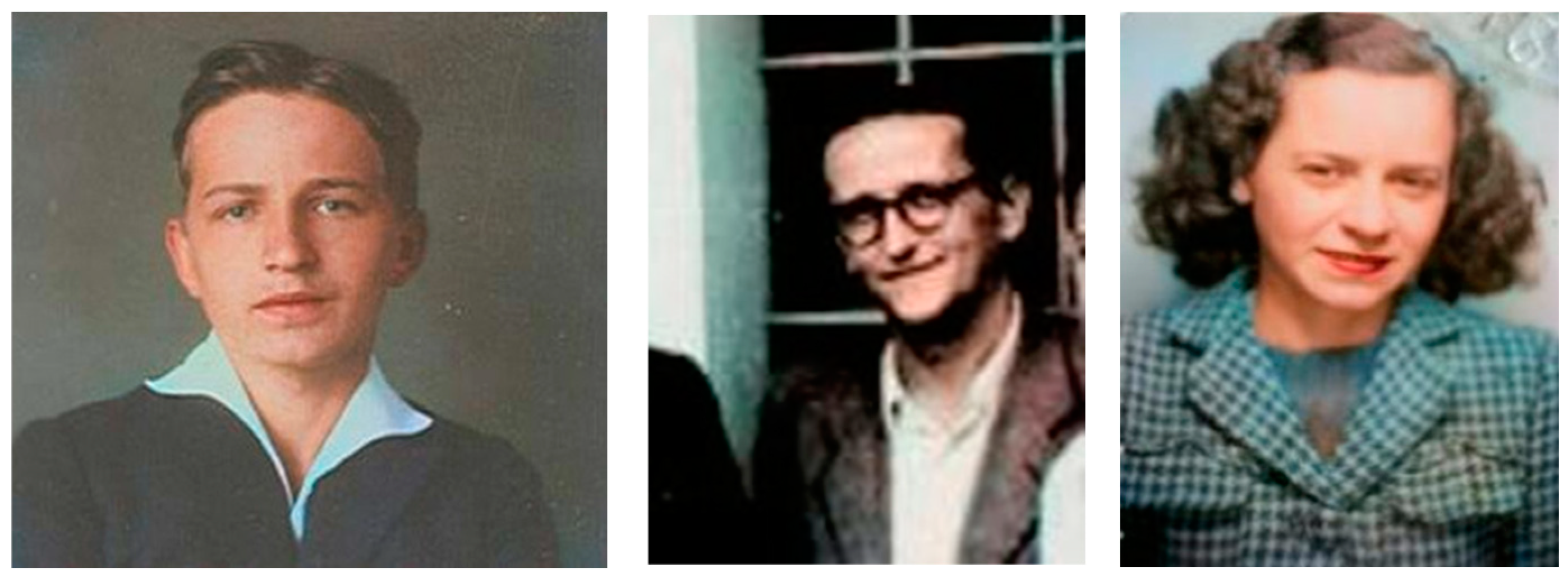
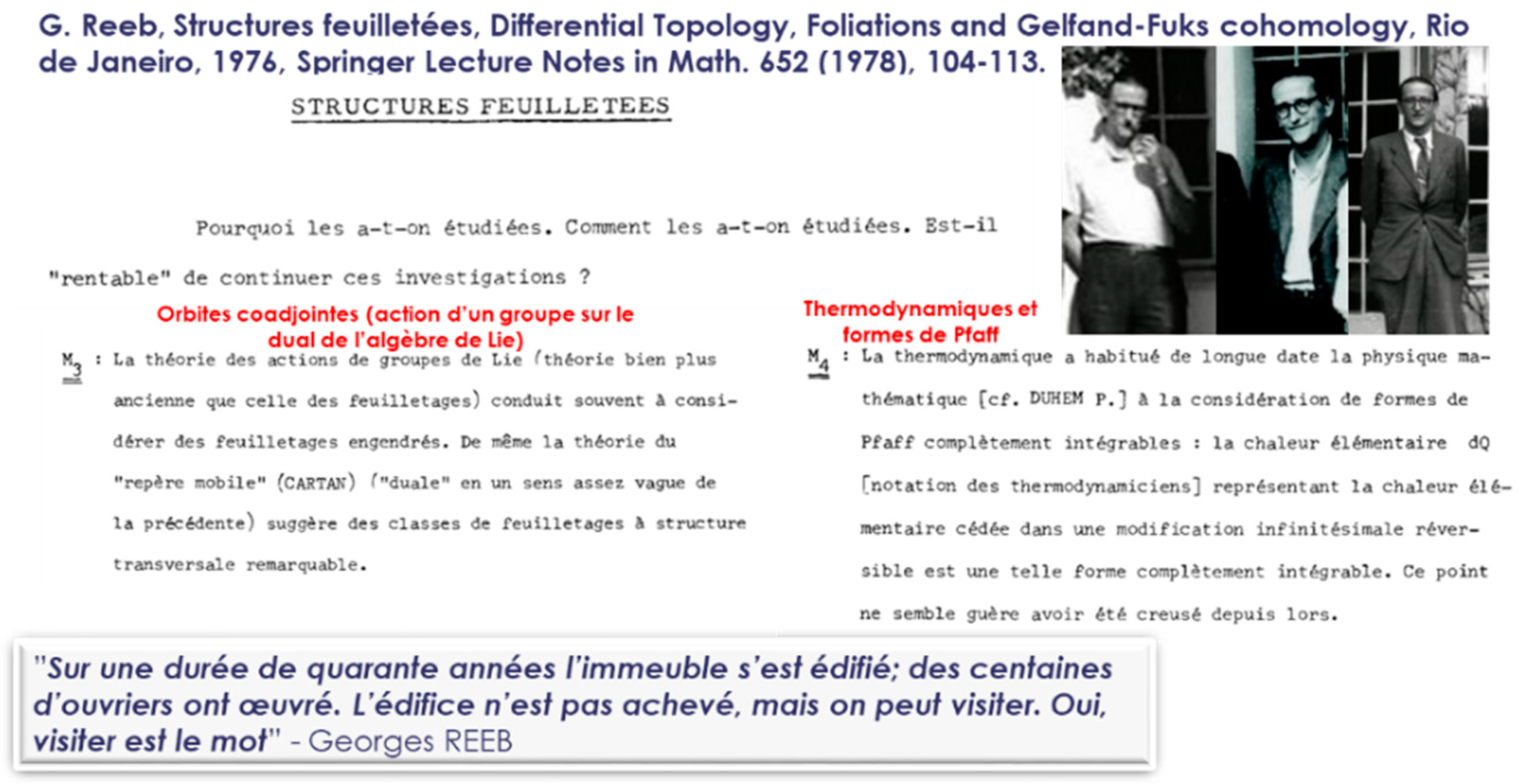
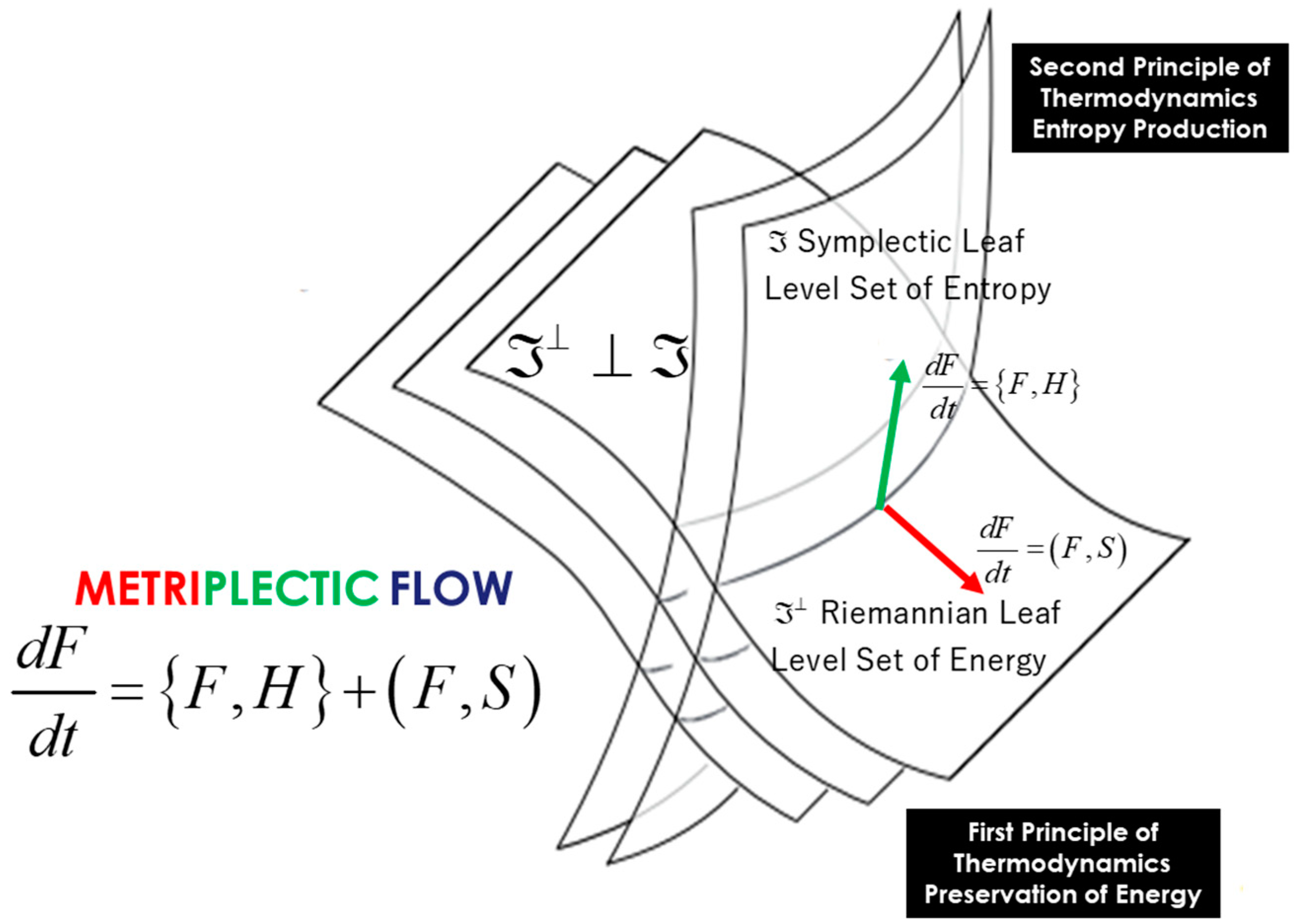
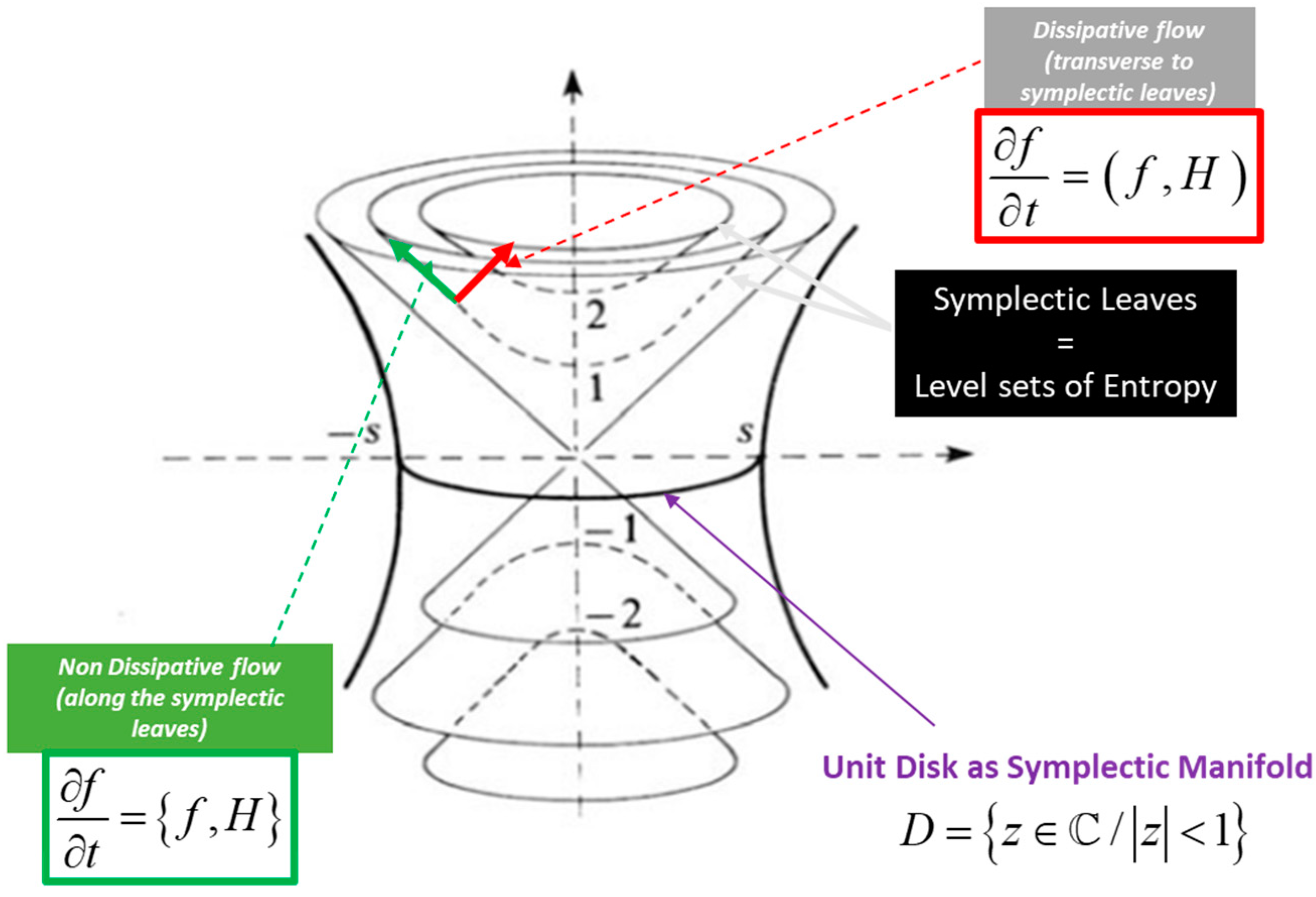
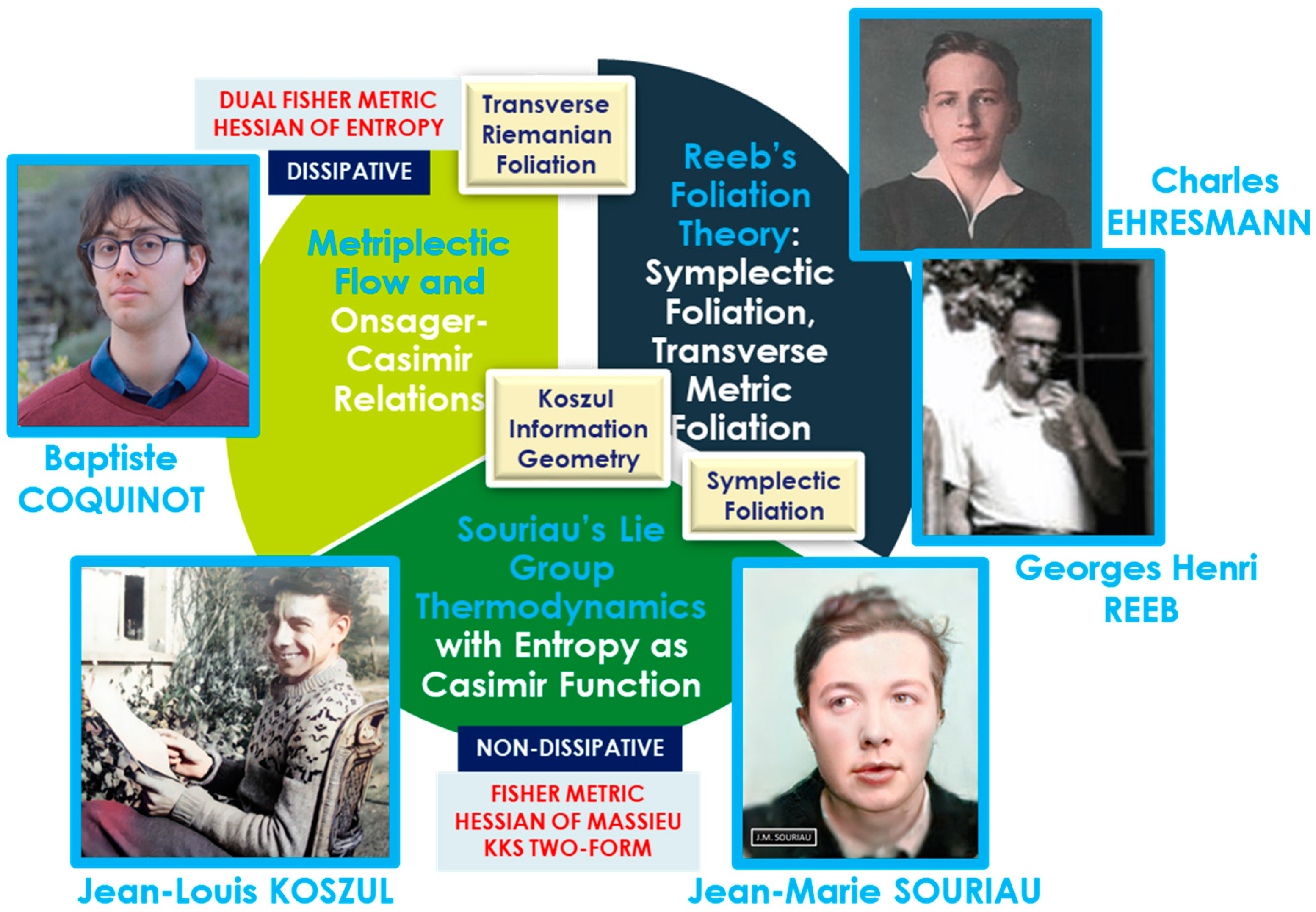
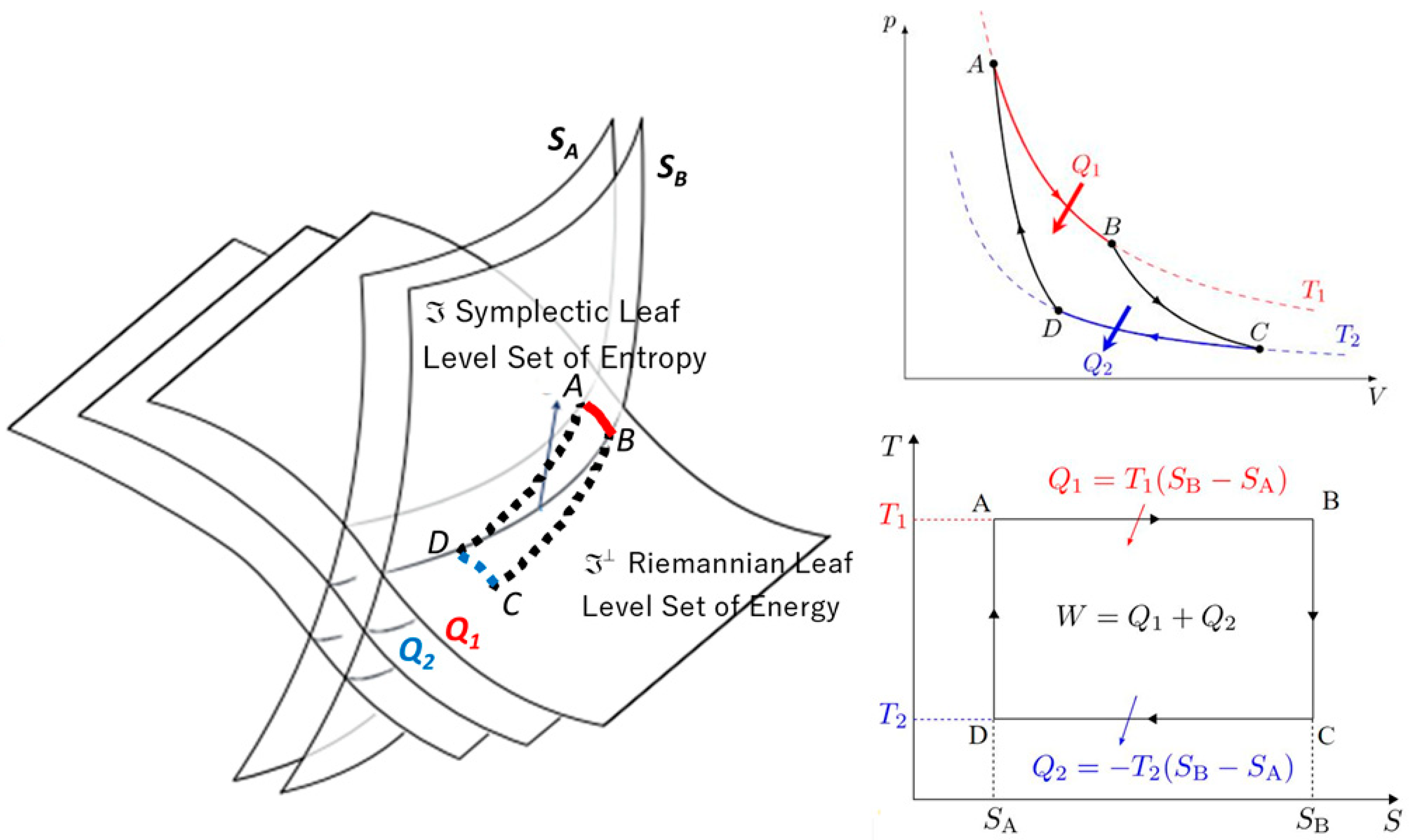
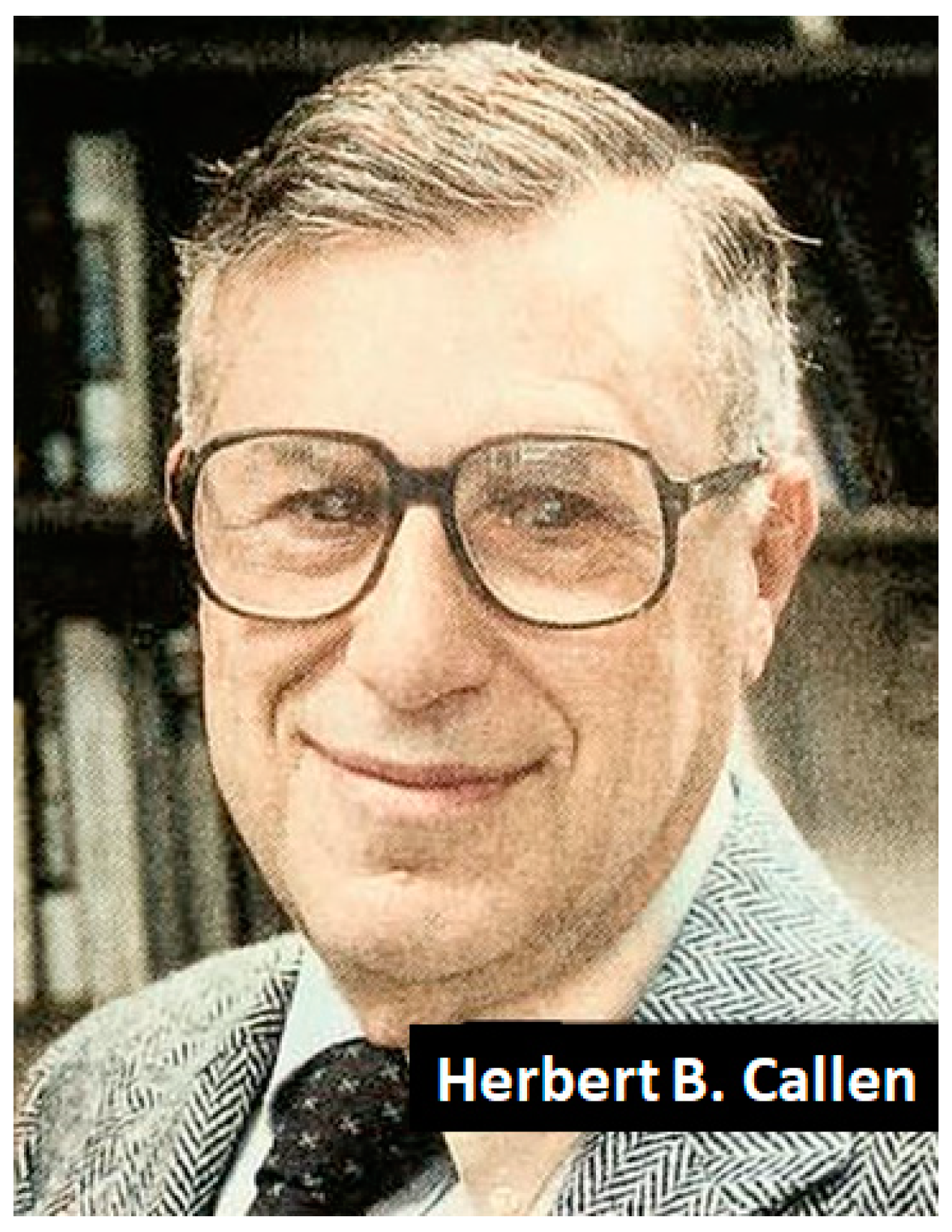

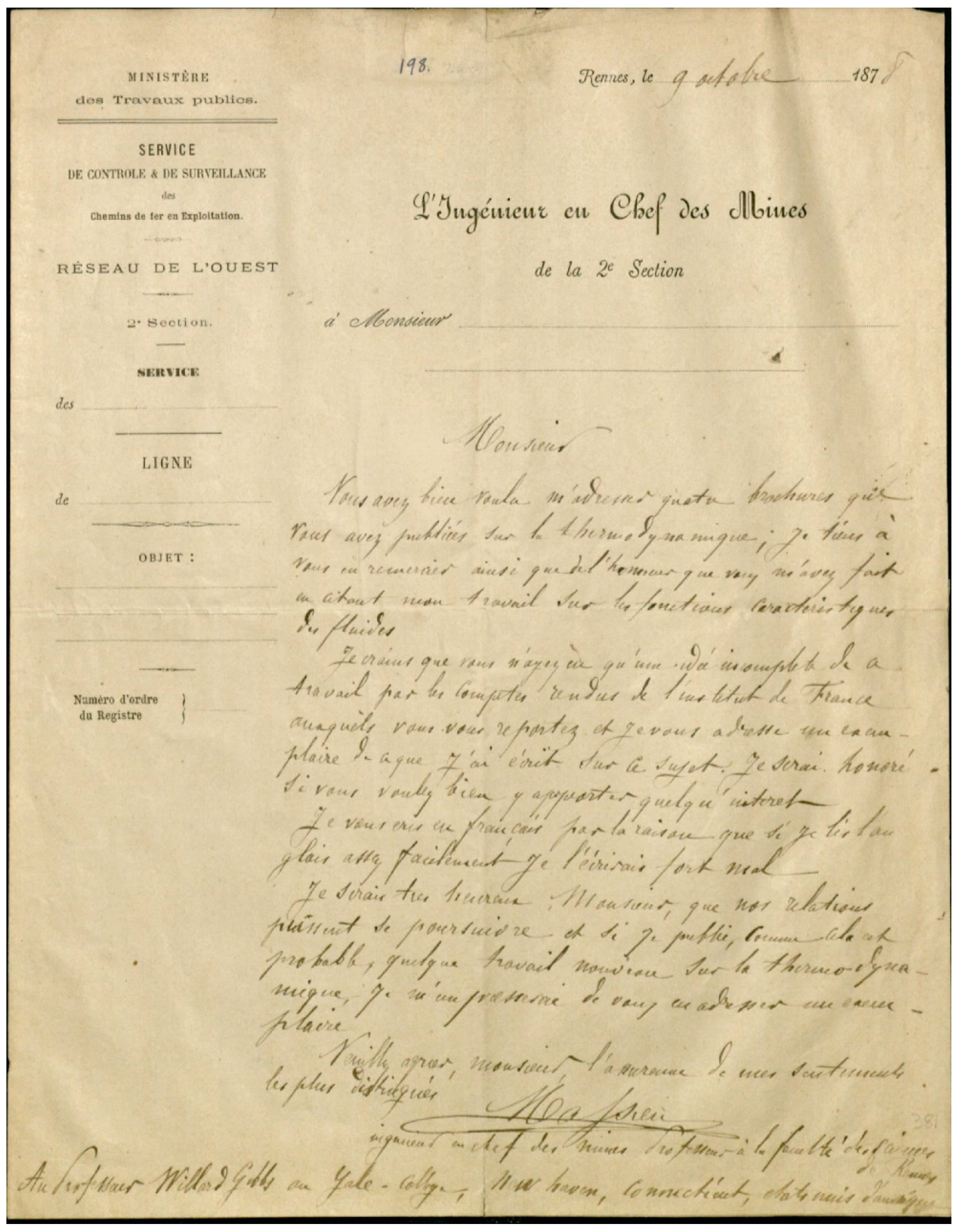
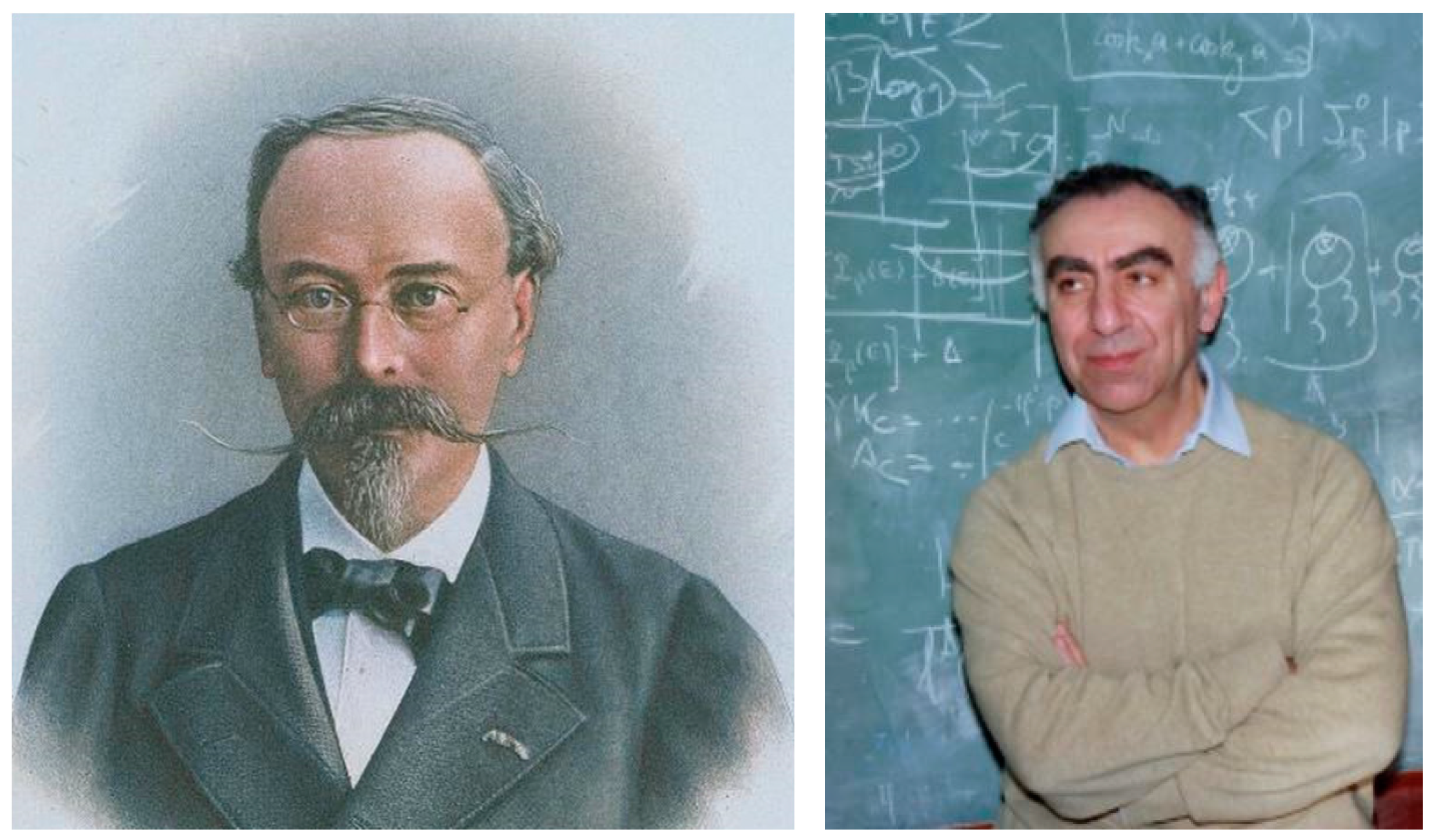

| Feature | Lindblad Equation | Metriplectic Equation |
|---|---|---|
| Reversible Part | ||
| Dissipative Part | ||
| Conserved Quantity | Energy possibly conserved | conserved |
| Entropy Production | Entropy typically increases (for decohering system) | |
| Underlying Structure | Operator algebra on Hilbert space | Bracket structure (Poisson + metric) |
Disclaimer/Publisher’s Note: The statements, opinions and data contained in all publications are solely those of the individual author(s) and contributor(s) and not of MDPI and/or the editor(s). MDPI and/or the editor(s) disclaim responsibility for any injury to people or property resulting from any ideas, methods, instructions or products referred to in the content. |
© 2025 by the author. Licensee MDPI, Basel, Switzerland. This article is an open access article distributed under the terms and conditions of the Creative Commons Attribution (CC BY) license (https://creativecommons.org/licenses/by/4.0/).
Share and Cite
Barbaresco, F. Jean-Marie Souriau’s Symplectic Foliation Model of Sadi Carnot’s Thermodynamics. Entropy 2025, 27, 509. https://doi.org/10.3390/e27050509
Barbaresco F. Jean-Marie Souriau’s Symplectic Foliation Model of Sadi Carnot’s Thermodynamics. Entropy. 2025; 27(5):509. https://doi.org/10.3390/e27050509
Chicago/Turabian StyleBarbaresco, Frédéric. 2025. "Jean-Marie Souriau’s Symplectic Foliation Model of Sadi Carnot’s Thermodynamics" Entropy 27, no. 5: 509. https://doi.org/10.3390/e27050509
APA StyleBarbaresco, F. (2025). Jean-Marie Souriau’s Symplectic Foliation Model of Sadi Carnot’s Thermodynamics. Entropy, 27(5), 509. https://doi.org/10.3390/e27050509








